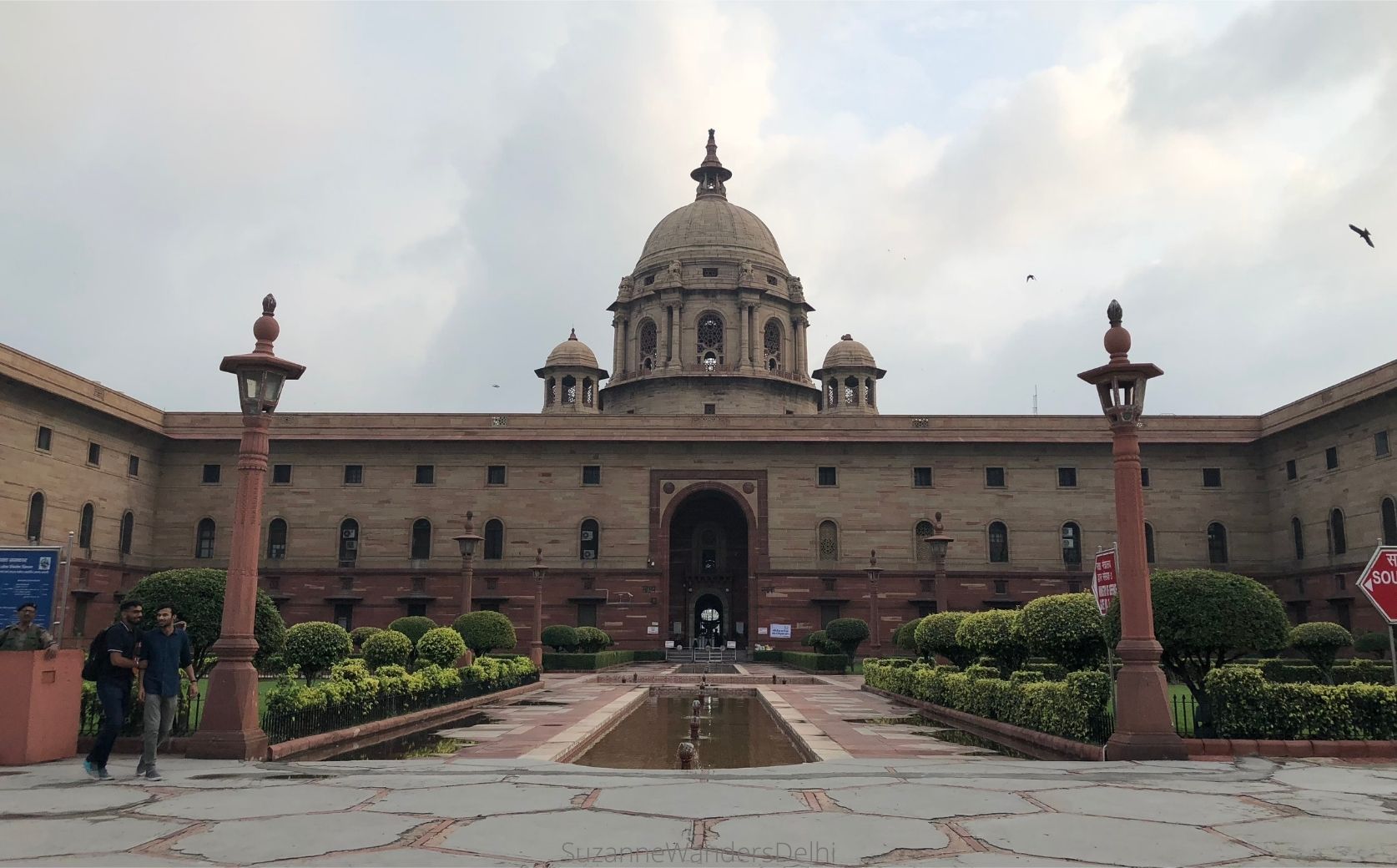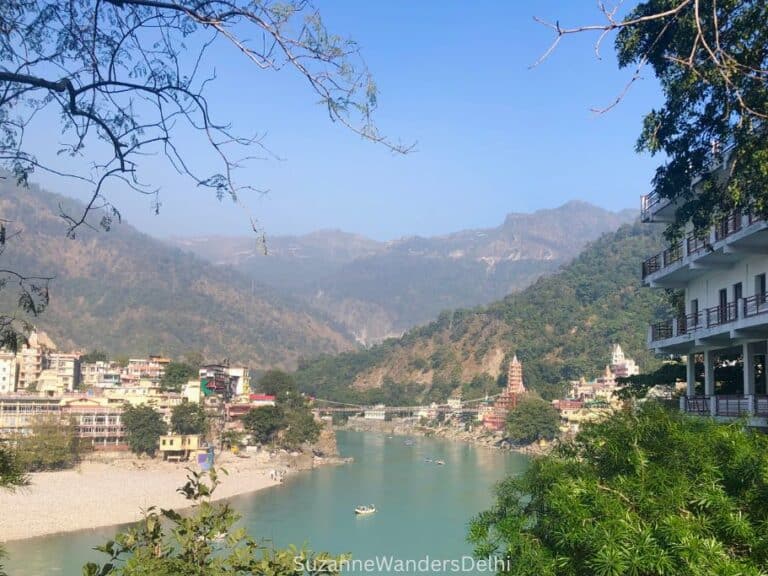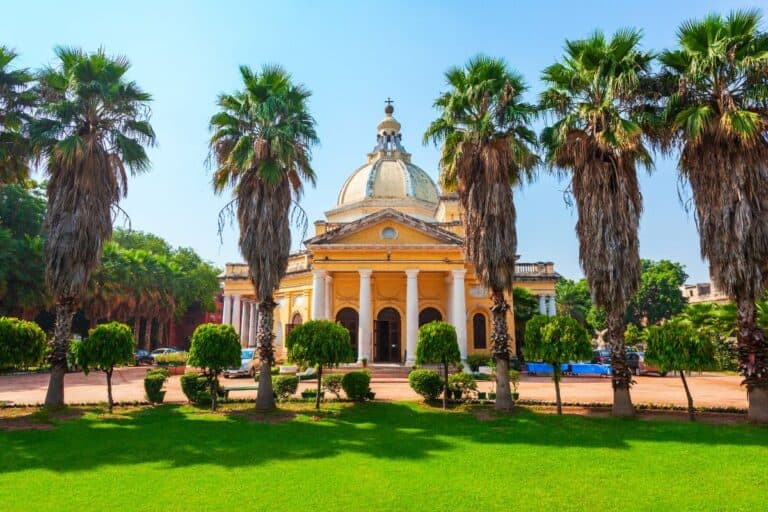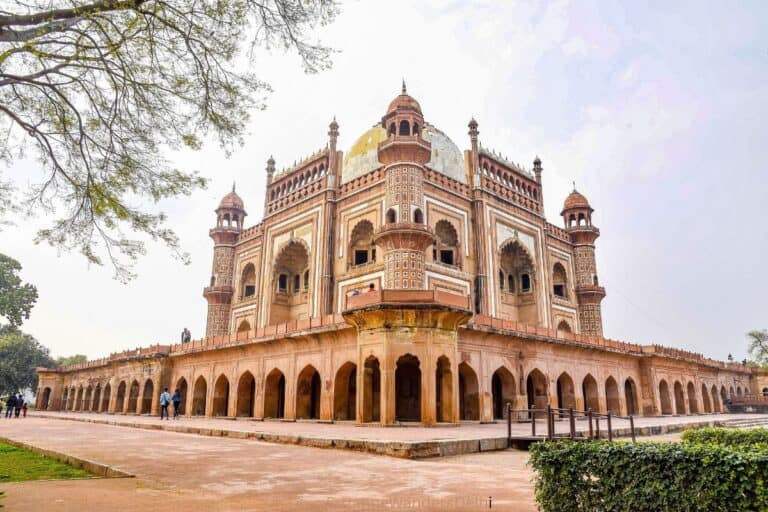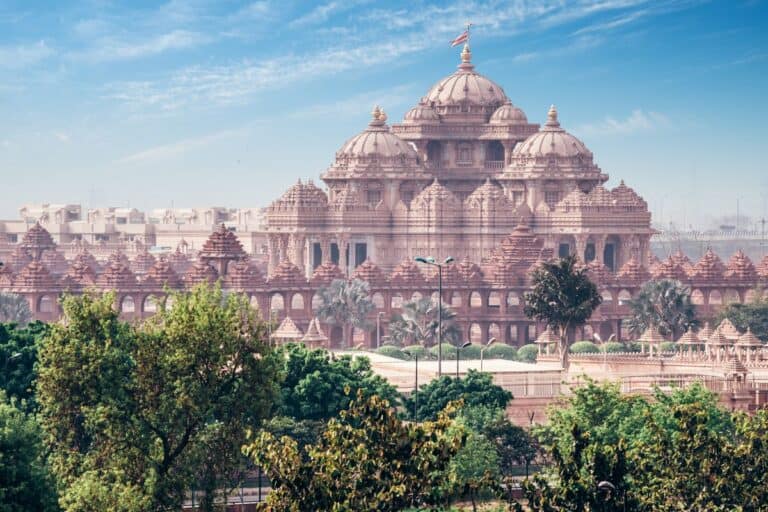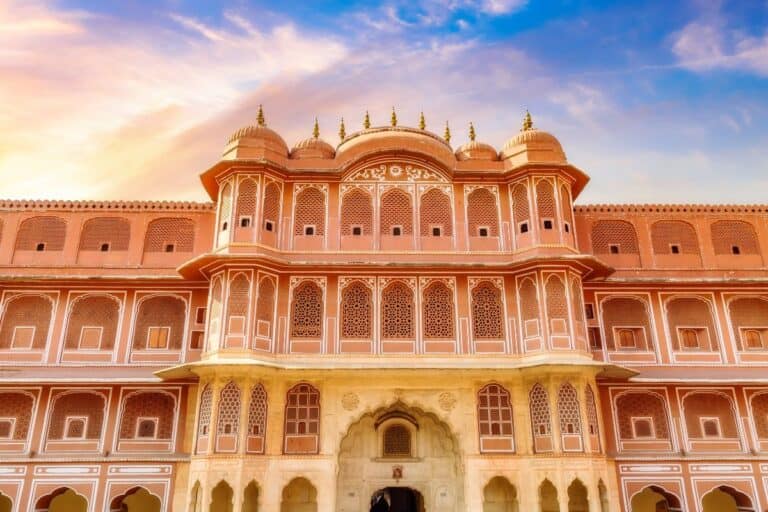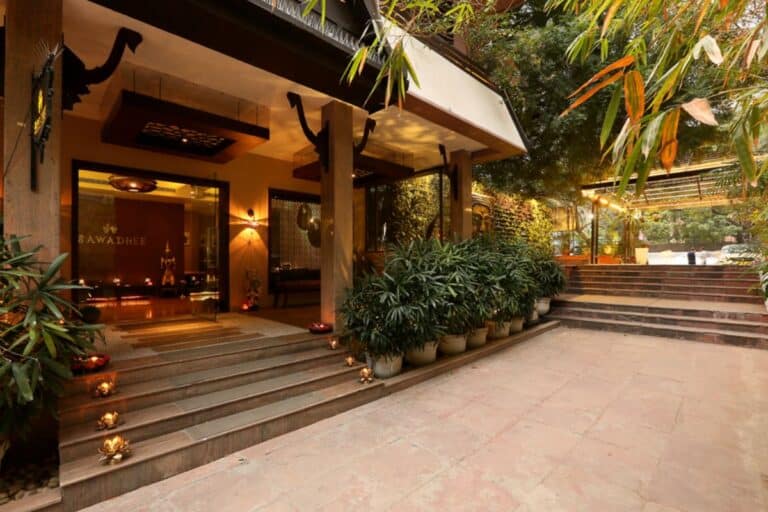78 Free Places to Visit in Delhi in 2025

Delhi has loads of free places to visit. You can see religious buildings of all faiths, unique markets, public art, museums, cultural festivals, dance performances, beautiful parks, monuments and spectacular historic sites for free! Whatever your interests are, Delhi is the city that has everything. I should know – I live in Delhi and have visited all of these sites. There are enough free places to visit in Delhi to keep you busy for weeks.
Short on time? I think these are the very best free places to visit in Delhi:
Swaminarayan Akshardham – one of the largest Hindu temples in the world, very beautiful
Chandni Chowk – the most famous street in Old Delhi
Lodhi Garden – heritage park with historic structures dating back to 1444
Bikaner House – former palace now an art centre with galleries, gardens and cafes
Bahai Lotus Temple – on the UNESCO tentative list
78 Free Places to Visit in Delhi in 2025
To make the most of your time I’ve organized this list by area. Delhi is a huge city – its population is 33 million and traffic is usually terrible. So that you don’t spend too many hours in transit, try to see sites that are near each other and use the Delhi metro to get around. The Delhi metro is one of the best systems in the world, and it’s the fastest way to get across the city.
Here are the best free places to visit in Delhi:
Free Places to Visit in Central Delhi
Central Delhi was primarily the area developed by the British during the Raj (British rule of India). This is the greenest and loveliest part of the city. It’s home to India’s parliament and government buildings, cultural and arts centres, museums and huge parks.
1. India Gate
One of the iconic symbols of Delhi, this war monument built in 1931 has become one of the most popular meeting and hang out spots for Indians in Delhi. It is surrounded by parks and faces the parliament buildings at the opposite end. Any time of day or night it is always a hive of activity and entertaining.
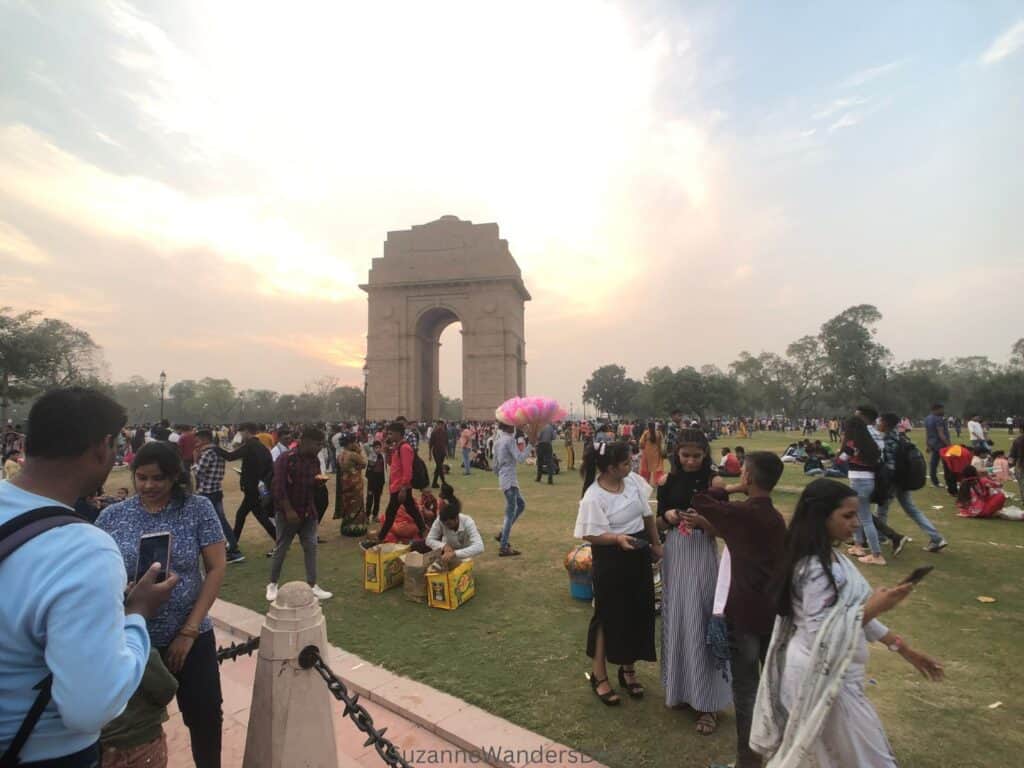
- Hours: 7:00 am – 11:00 pm, daily
- Nearest metro station: Central Secretariat (Yellow line)
2. Bikaner House
Here’s your chance to visit a former Prince’s palace. Bikaner House was the palace of the Maharaja of Bikaner. In 2015 it was turned into an art and cultural centre to promote Indian talent. There are always several art exhibits on at Bikaner House, which gives you the chance to stroll through the beautiful building. The grounds are also lovely – a quiet oasis in busy Delhi.
- Hours: 11:00 am to 7:00 pm, daily
- Nearest metro station: Khan Market (Violet line)
3. Changing of the Guard at Rashtrapati Bhavan
This is the official residence of the President of India. Rashtrapati Bhavan is the largest home of any head of state in the world, and is 50 times larger than the White House. Every Saturday at 8:00 am there is a changing of the guard ceremony. Tickets must be booked in advance – make sure to bring government ID with you: https://visit.rashtrapatibhavan.gov.in/visit/change-of-guard/y7
- Hours: 8:00 am – 9:00 am, Saturday
- Nearest metro station: Central Secretariat (Yellow line)
4. Lodhi Garden
This is Delhi’s most captivating park. It’s a lovely green space, with hundreds of varieties of trees, shrubs and flowers. But the most magical part of Lodhi Garden is the Sayyid and Lodhi dynasty ruins dating back to 1444. There are at least 4 mausoleums, a mosque, madrasa, and arched bridge, all beautifully restored. Make sure you have your camera. This is one of the most beautiful free places to visit in Delhi.
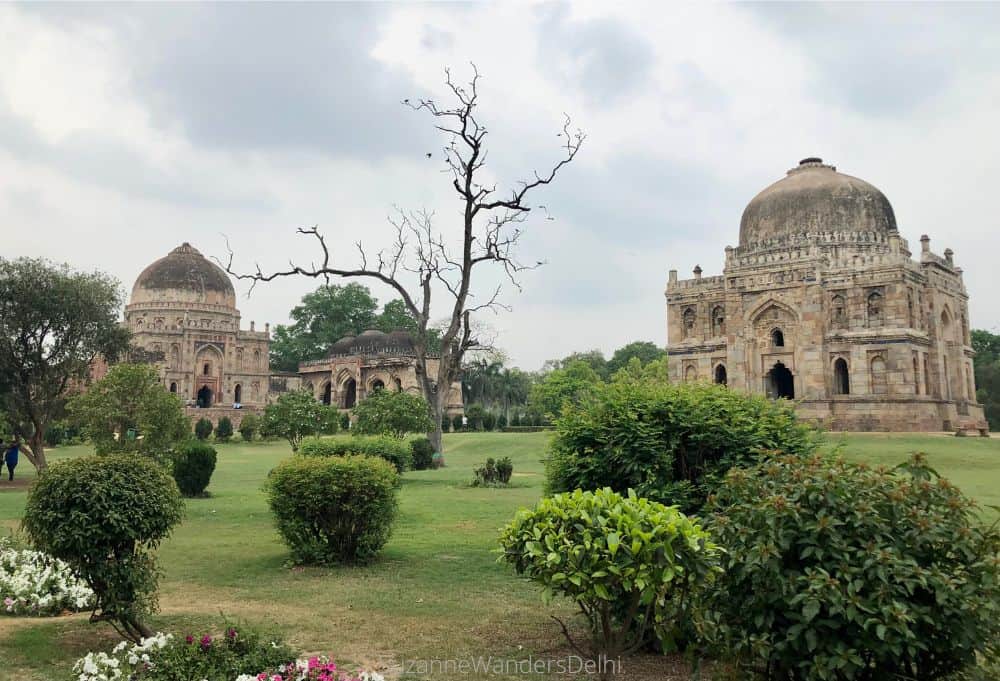
- Hours: 7:00 am – 11:00 pm, daily
- Nearest metro station: Jorbagh (Yellow line)
5. Lodhi Art District
India’s first outdoor art district in directly across the street from Lodhi Garden in a residential enclave called Lodhi Colony. The colony was built by the British in the 1940s to house government employees. The low rise apartment buildings with huge open arches make perfect canvases for the 50+ murals, most of which have an environmental or social issue theme. Just stroll along the lanes and you’ll come across the murals.
Here’s a map of mural locations and their names: St+Art India’s location guide.
- Hours: 24/7, but go during the day to view the murals
- Nearest metro station: Jorbagh (Yellow line)
6. India Habitat Centre
India Habitat Centre is a membership based arts and culture centre, but the atrium with public art as well as the Visual Art Gallery and Open Palm Court Gallery are open to the public. Both galleries regularly feature specially curated exhibitions of paintings, sculptures, graphic arts and photography.
You can check the calendar of events at the India Habitat Centre website.
- Hours: 10:00 am – 8:00 pm Tuesday to Sunday (closed Monday)
- Nearest metro station: Jawaharlal Nehru Stadium (aka JLN Stadium) (Violet line)
7. Sai Baba Temple on Lodhi Road
This Sai Baba temple on Lodhi Road is one of the oldest and busiest Sai Baba temples in Delhi. Sai Baba is one of the most revered saints in India, and devotees often report feeling Baba’s divine presence here.
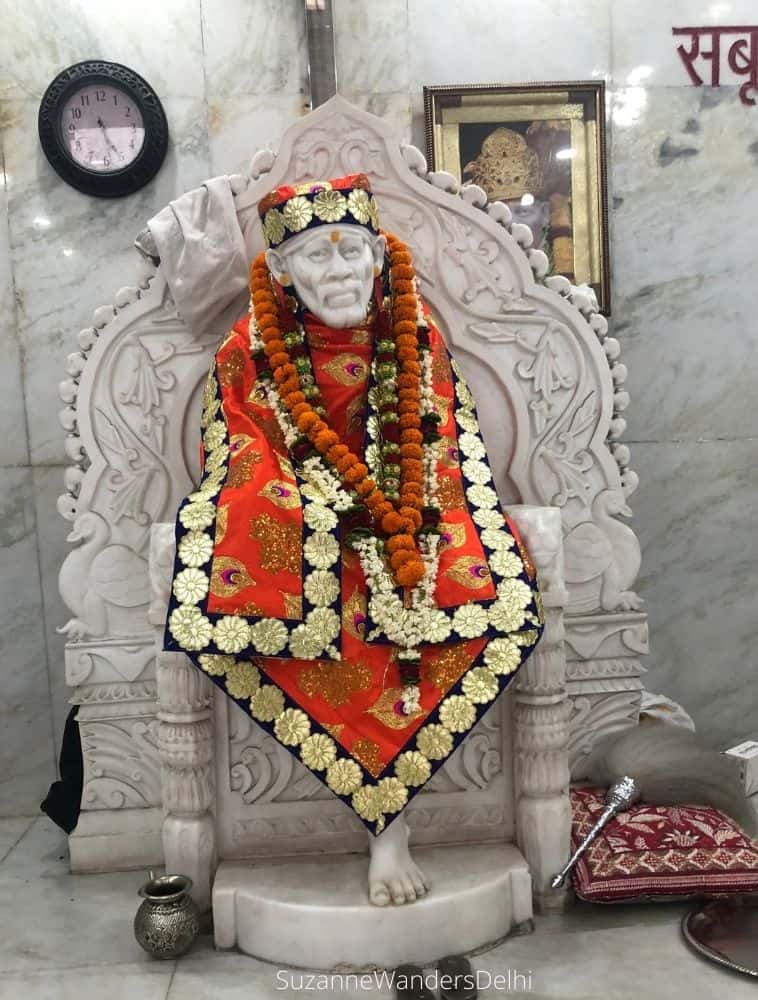
I have visited this temple and it definitely has a spiritual energy. The likeness of Sai Babi is magnificent, completely enshrined in gold and silver and surrounded by flowers. The obvious devoutness of Sai Baba’s followers is also impressive. Shoes have to be removed.
- Hours: 5:00 am – 10:00 pm, daily (aartis at 5:30 am, 8:00 am, 12:00 pm, 6:30 pm and 9:30 pm)
- Nearest metro station: Jawaharlal Nehru Stadium (aka JLN Stadium) (Violet line)
8. Sangeet Natak Akademi
If you are interested in traditional Indian music and instruments you will want to visit the Sangeet Natak Akademi. They have an impressive collection of folk and tribal instruments on permanent display which includes traditional and rare wind, string, tabla and percussion instruments from all over India. The academy also exhibits a collection of masks and puppets, including string puppets, glove puppets and shadow puppets.
It’s located in Rabindra Bhawan.
- Hours: 9:30 am – 5:30 pm Monday to Friday (closed Saturday and Sunday)
- Nearest metro station: Mandi House (Blue line)
9. Connaught Place
Connaught Place is the unofficial centre of Delhi, and the favourite meeting and hang out place of Delhiites. The British built commercial and retail hub is a great place to window shop, people watch, visit art galleries, and see the crazy underground Palika bazaar. City blocks are all lettered with wide pedestrian walkways so it’s easy to navigate.
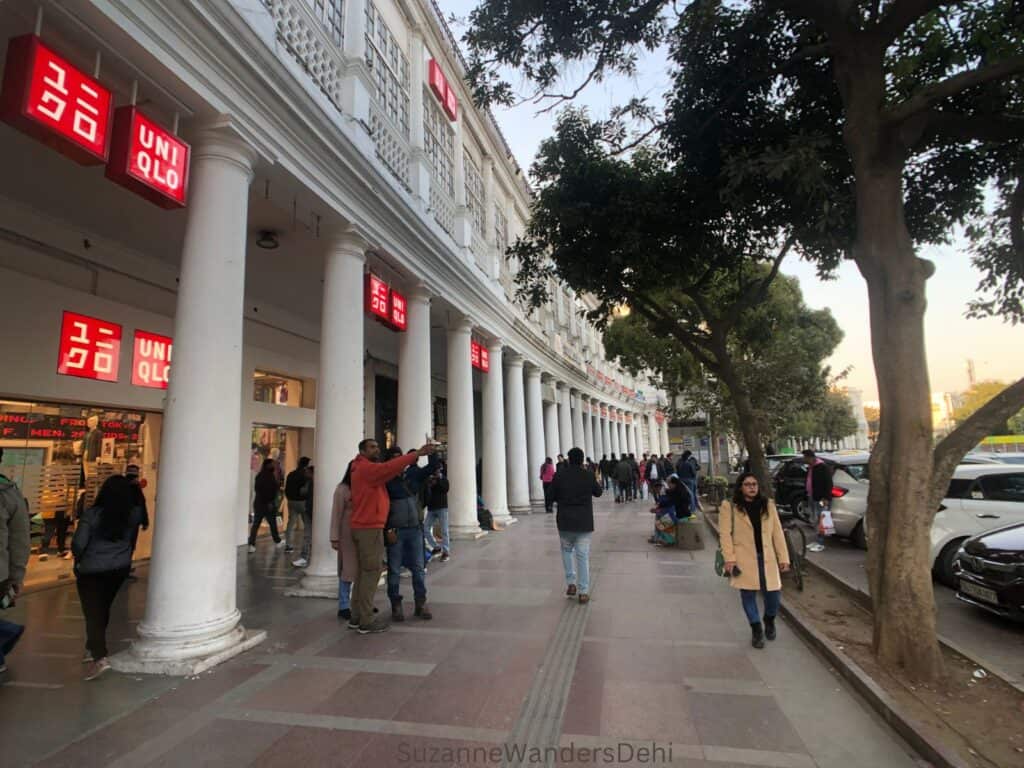
- Hours: 10:00 am – 10:00 pm, daily
- Nearest metro station: Rajiv Chowk (Blue or Yellow line)
10. Pracheen Hanuman Temple
Pracheen Hanuman Mandir is one of the most important and oldest Hanuman temples in India. The current temple was rebuilt in 1724, but devotees believe there was an original temple on this site as far back as 800 BC. One reason this temple is so revered is the image of Lord Hanuman is self-manifested (called a Swayambhu), meaning it was not made, but appeared spiritually. Shoes have to be removed.
- Hours: 5:00 am – 11:00 pm daily, except Tuesday and Saturday when it is open almost 24 hours (aartis are at 5:30 am, except Tuesday and Saturday when they are at 5:00 am)
- Nearest metro station: Rajiv Chowk (Blue or Yellow line)
11. State Emporiums on Baba Kharak Singh Road
Visiting the state emporiums on Baba Kharak Singh Road is a wonderful way to view and learn about cultural and handcraft traditions from different states across India. Practically every state is represented and sells state produced cultural items only.
Of course shopping is not free, but you don’t have to buy anything – it’s a way to learn about the places in India you may not have a chance to visit. If you do plan to purchase a pashmina, read my guide how to buy a real pashmina – this is the #1 item visitors get ripped off on.
- Hours: 10:00 am or 10:30 am – 6:30 or 7:00 pm Monday to Saturday (closed Sunday)
- Nearest metro station: Rajiv Chowk (Blue or Yellow line)
12. Agrasen ki Baoli
This is a gorgeous stepwell and one of the best free places to visit in Delhi. Delhi used to have hundreds of stepwells, but only a handful remain. This one was built in the 14th century by the Agrawal community, but before that there was an older stepwell here that dates back to 3000 BC.

Don’t stare at the black water at the bottom of the stepwell – it is rumoured to have mystical powers. The ruins of a mosque are on the site also.
- Hours: 9:00 am – 5:00 pm, daily
- Nearest metro station: Barakhamba Road (Blue line)
13. Indira Gandhi National Centre for the Arts (IGNCA)
This cultural arts centre often has free film screenings, music and dance performances, lectures and exhibitions. There is always something going on at IGNCA. Currently the IGNCA is in a temporary location in the former Janpath Hotel. A new state of the art facility is being built and will be ready sometime in 2025.
- Hours: 9:00 am – 5:30 pm, Monday to Friday (closed Saturday and Sunday) – hours for events may fall outside of these regular hours
- Nearest metro station: Patel Chowk (Yellow line)
14. Devi Prasad Sadan Dhobi Ghat
Just down the lane from Agrasen ki Baoli, is one of Delhi’s last traditional dhobi ghats (outdoor laundry). Visiting the Devi Prasad Sadan Dhobi Ghat is like stepping back in time to an India from 100 years ago. The laundry is done for local families and businesses (including some hotels) in big tubs of soapy water, using hand cranked spinning machines and cement slabs.
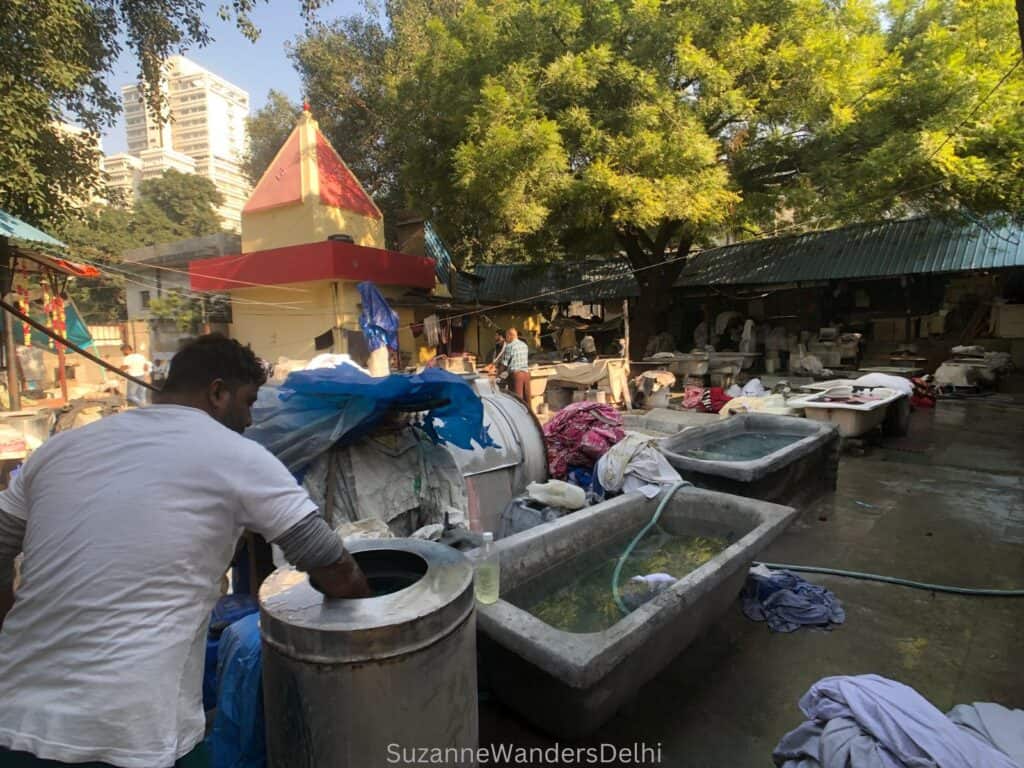
The dhobi walas are cheerful and friendly, but please be respectful – this is their livelihood.
- Hours: 5:00 am – 2:00 pm, daily
- Nearest metro station: Barakhamba Road (Blue line)
15. Janpath Market
Delhi is famous for its markets, and this is one of the most popular ones, located very centrally in Connaught Place. Janpath Market is actually four markets in one: the main market, street market, Gujarati market and Tibetan market. Make sure to check out the street market part – it’s a lively market and fun to visit even if you don’t buy anything. The street market is on Connaught Lane, just off Janpath Road.
- Hours: 11:00 am – 9:00 pm, Monday to Saturday (closed Sunday)
- Nearest metro station: Janpath (Violet line)
16. India Gandhi Memorial Museum
The Indira Gandhi Memorial Museum is the former family home and place of assassination of past Prime Minister Indira Gandhi. She was a beloved and sometimes reviled leader, often referred to as India’s Iron Lady. Her assassination in 1984 triggered anti-Sikh riots which killed more than 3,000 Sikhs in Delhi alone.
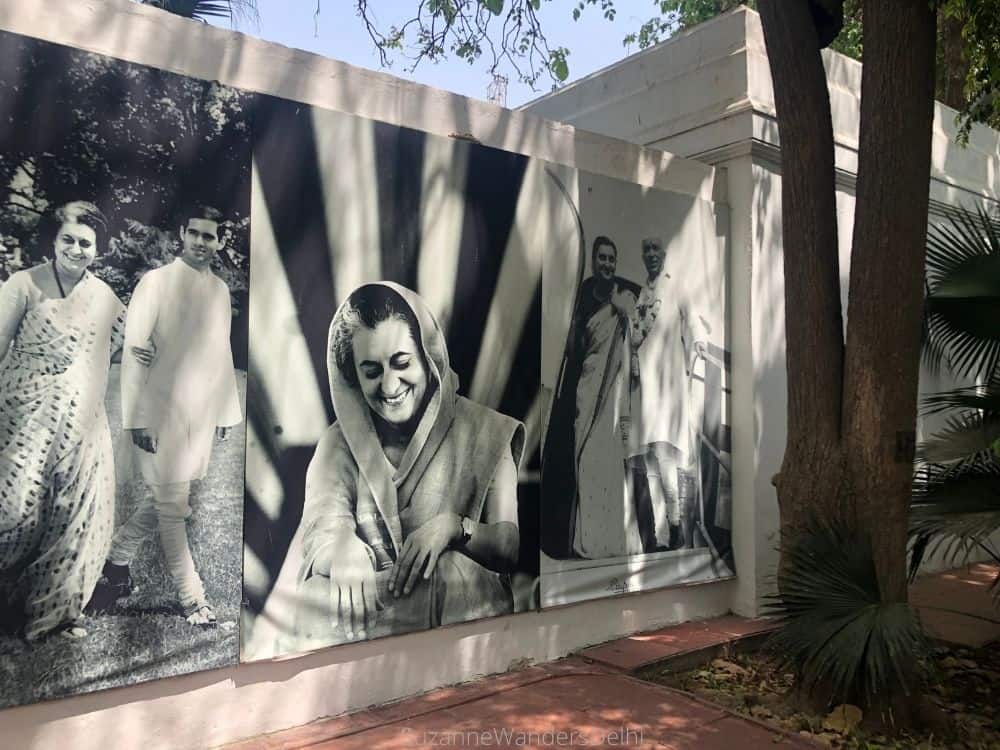
Indira’s father was Jawaharlal Nehru, the first prime minister of India, and Indira’s son Rajiv Gandhi was also prime minister (assassinated in 1991). To this date, the Gandhi/Nehru family remain prominent in Indian politics. They are often likened to the US Kennedy family.
- Hours: 9:30 am – 4:45 pm, Tuesday to Sunday (closed Monday)
- Nearest metro station: Lok Kaylan Marg (Yellow line)
17. Gandhi Smriti Museum
Mahatma Gandhi is still revered across India as the Father of the Nation. Gandhi Smriti Museum is the house he stayed at during the last months of his life. At the time it was owned by the Birla family and was known as Birla House. The rooms Gandhi stayed in have been carefully preserved, even with Gandhi’s spectacles.
Visitors can tour the grounds and literally walk in Gandhi’s last footsteps to where he was assassinated on January 30, 1948. This is one of the most moving free places to visit in Delhi.
- Hours: 10:00 am – 4:30 pm, Tuesday to Sunday (closed Monday)
- Nearest metro station: Lok Kaylan Marg (Yellow line)
18. DAG (Delhi Art Gallery)
DAG is India’s premiere art gallery for 18th to 20th century Indian art. DAG has galleries in Mumbai and New York, but Delhi is the flagship gallery. Exhibitions are carefully curated and always changing. DAG is often referred to as the crown jewel of the Indian art scene and a must for serious art lovers.
For a list of current and upcoming exhibits, check their website: https://dagworld.com/exhibitions.html.
- Hours: 10:30 am – 7:00 pm, Monday to Saturday (closed Sunday)
- Nearest metro station: Janpath (Violet line)
19. Gurudwara Bangla Sahib
A gurudwara is a Sikh temple and Gurudwara Bangla Sahib is one of the most prominent in Delhi. It’s a beautiful gurudwara with a large sarovar (holy pond), colonnaded walkways, expansive prayer hall and two langar dining halls. Everyone is welcome regardless of religion, age, colour or sex.
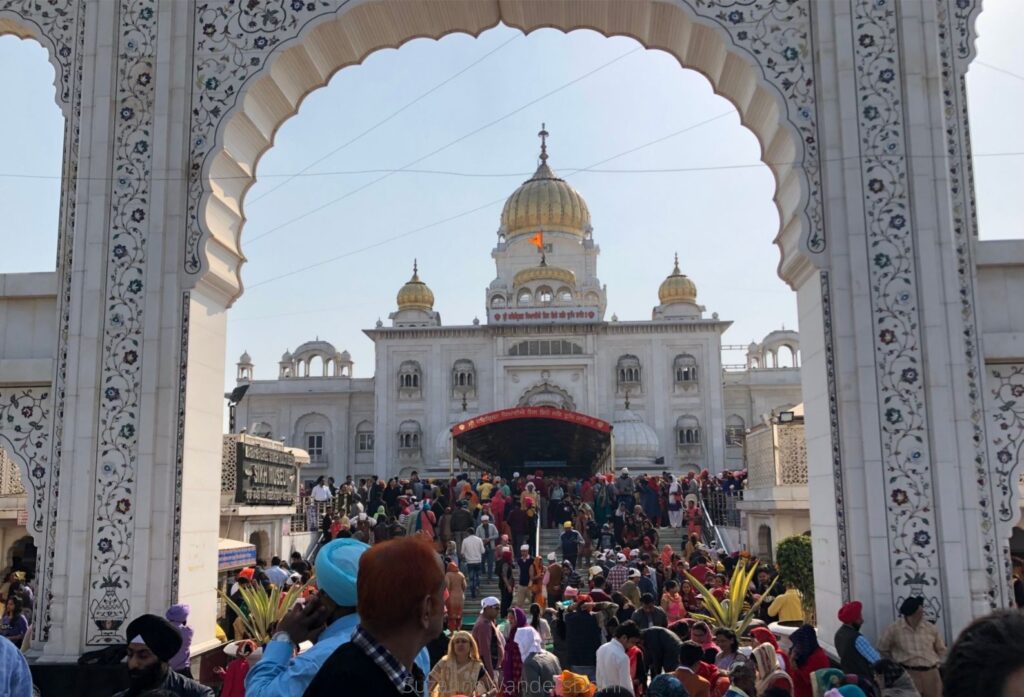
Gurudwara Bangla Sahib is a large complex – there’s free accommodation for devotees, a hospital, museum and visitors centre. Shoes must be removed and heads covered. The gurudwara has bandanas you can borrow.
While there, have langar (free vegetarian meal). It’s a wonderful community experience and the food is always fresh and delicious. You can ask a volunteer to show you the kitchens where volunteers prepare the food – it’s very impressive. The gurudwara feeds 35,000 people a day and that number triples on special holy days.
- Hours: 24/7
- Nearest metro station: Shivaji Stadium (Orange line)
20. National Philatelic Museum
This is one of Delhi’s quirkier museums but the stamp collection is excellent. There are thousands of stamps from all over the world. Especially impressive are the Indian stamp exhibits which trace the history of the country starting with the first stamps issued in 1854, through pre-independence (including stamps issued by the former princely states and the British Raj), to post-independence.
- Hours: 10:00 am – 5:00 pm, Monday to Friday (closed Saturday and Sunday)
- Nearest metro station: Patel Chowk (Yellow line)
21. The Metro Museum
Delhi’s Metro Museum was the first metro museum in South East Asia. It’s located in the Patel Chowk metro station and is free for anyone riding the metro. The museum does a great job showcasing the difficulties in construction and the challenges of managing one of the largest metro systems in the world.
- Hours: 10:00 am – 11:00 pm daily; free if riding the metro
- Nearest metro station: Patel Chowk (Yellow line)
22. Buddha Jayanti Park
This is a lovely park, set in the enormous Central Ridge Reserve Forest, often referred to as the lungs of Delhi. There are many walking paths, gardens and over 100 types of trees and shrubs. Peacocks, woodpeckers, barbets and herons populate the park.
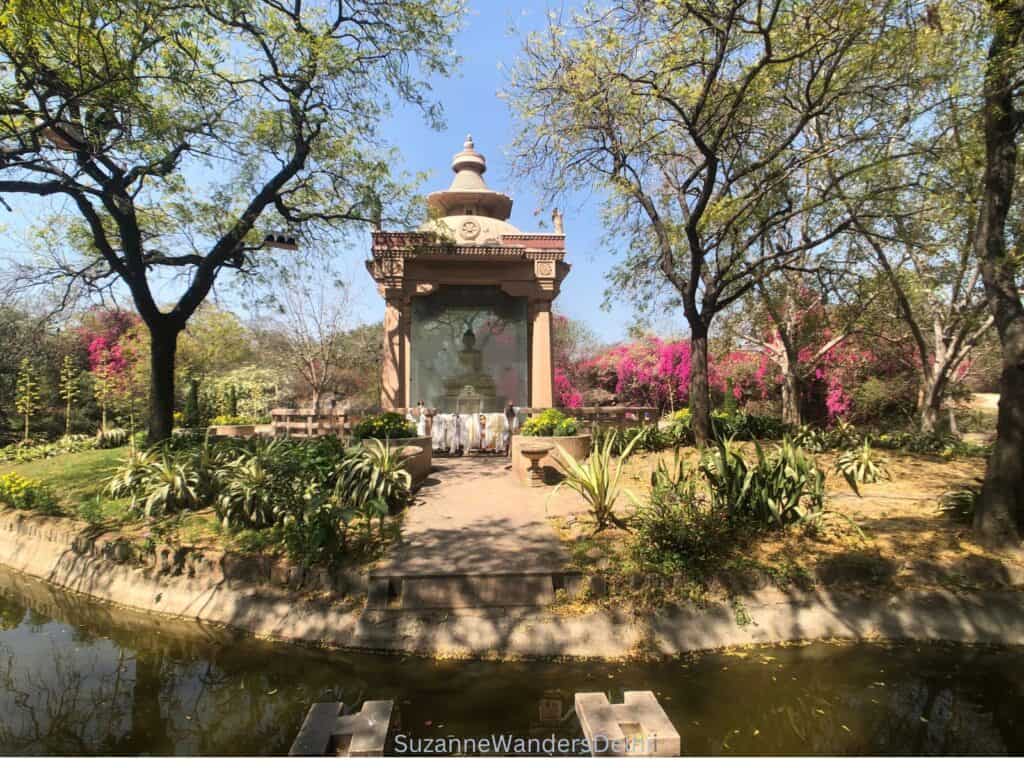
Apart from the large golden Buddha on a small island, the park is famous for having a sapling from the holy Bodhi tree in Sri Lanka which Lord Buddha gained enlightenment under.
- Hours: 5:00 am – 7:00 pm, daily
- Nearest metro station: Durgabai Deshmukh South Campus (Pink line)
23. Sacred Heart Cathedral
The largest Catholic church in Delhi was built in the 1930s by the British Raj. It’s a beautiful, Italian style church. Pope John Paul II visited the cathedral twice on two separate visits to India in 1986 and 1999. The cathedral is still active today with daily mass heavily attended by Delhi’s Catholic community.
- Hours: 6:30 am – 6:00 pm, daily
- Nearest metro station: Patel Chowk (Yellow line)
24. Malcha Mahal
Widely believed to be haunted, Malcha Mahal is a hunting lodge built by ruler Feroz Shah Tughlaq in 1325. It remained forgotten for many years until it gained notoriety as the residence of a mysterious family who claimed to be descendants of the Prince of Oudh.
The matriarch relentlessly petitioned the Indian government for property seized by the British during the Raj. Eventually they were offered Malcha Mahal and they lived for almost 40 years without running water or electricity. It is the ghosts of the matriarch and her son (he was the last surviving family member and found dead in the Mahal in 2017), that are said to haunt the place.
- Hours: 24/7 but for safety reasons go in the daytime – the location is secluded
- Nearest metro station: Durgabai Deshmukh South Campus (Pink line)
25. Shri Laxmi Narayan Mandir
One of the most prominent Hindu temples in Delhi, Shri Laxmi Narayan Mandir (aka Laxminarayan Temple) is decorated with lovely fresco paintings, carvings and marble icons. It is dedicated to Lord Vishnu (Narayan) and his consort, Lakshmi.
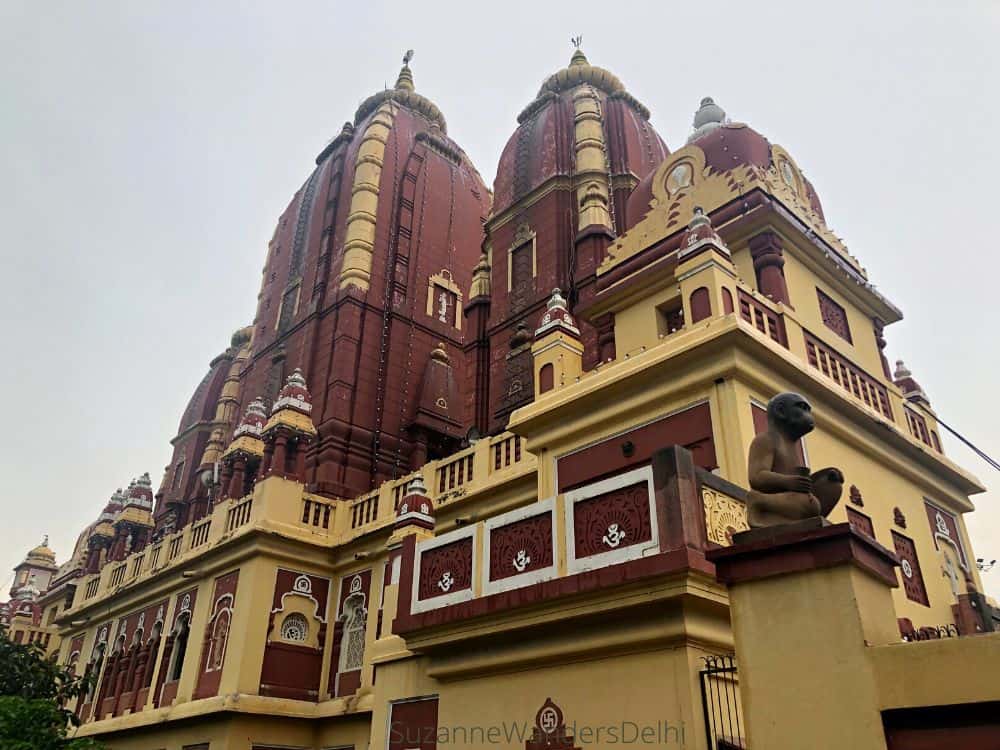
Mahatma Gandhi inaugurated the temple 1939 under the condition that it be open to all Hindus, regardless of caste. The grounds are extensive with fanciful fountains and statues depicting Hinduism. Shoes must be removed.
- Hours: 4:30 am – 9:00 pm, daily (closed between 1:30 – 2:30 pm)
- Nearest metro station: R.K. Ashram Marg (Blue line)
26. Bhuli Bhatiyari Ka Mahal
This is the second hunting lodge in the Central Ridge Reserve Forest built by ruler Feroz Shah Tughlaq in the 14th century. Like many of Delhi’s abandoned historical structures, it is rumoured to be haunted. It is in a secluded area behind the Hanuman Mandir, and whether it is the quiet, overgrown nature of the surroundings or actual paranormal activity is hard to tell, but there is an odd feeling about the place.
- Hours: 24/7 but for safety reasons go in the daytime – the location is secluded
- Nearest metro station: Jhandewalan (Blue line)
27. Sankat Mochan Hanuman Mandir (Karol Bagh)
This one of a kind temple is a 108 foot high orange statue of Lord Hanuman, the Hindu god who is half man and half monkey. It’s one of the most unique free places to visit in Delhi. The temple is clearly visible from the metro line and flyover making it an iconic symbol of Delhi. The entrance is through the gaping mouth of a monster slain by Hanuman, and inside are several smaller temples, each with their own priest.
Try and visit the temple on Tuesday or Saturday at 8:15 am or 8:15 pm when Hanuman opens his chest to reveal Lord Rama and Sita in his heart. A crowd always gathers on the street to watch the spectacle. Shoes must be removed before entering the temple.
- Hours: 6:00 am – 10:00 pm daily
- Nearest metro station: Jhandewalan (Blue line)
28. The Great Procession Mural at ITC Maurya Hotel
If you love art, you must visit the ITC Maurya Hotel to see Krishen Khanna’s ”The Great Procession,” one of his most significant works. The kaleidoscope style mural is painted on the domed ceiling of the lobby. It took Khanna 4 years to complete.
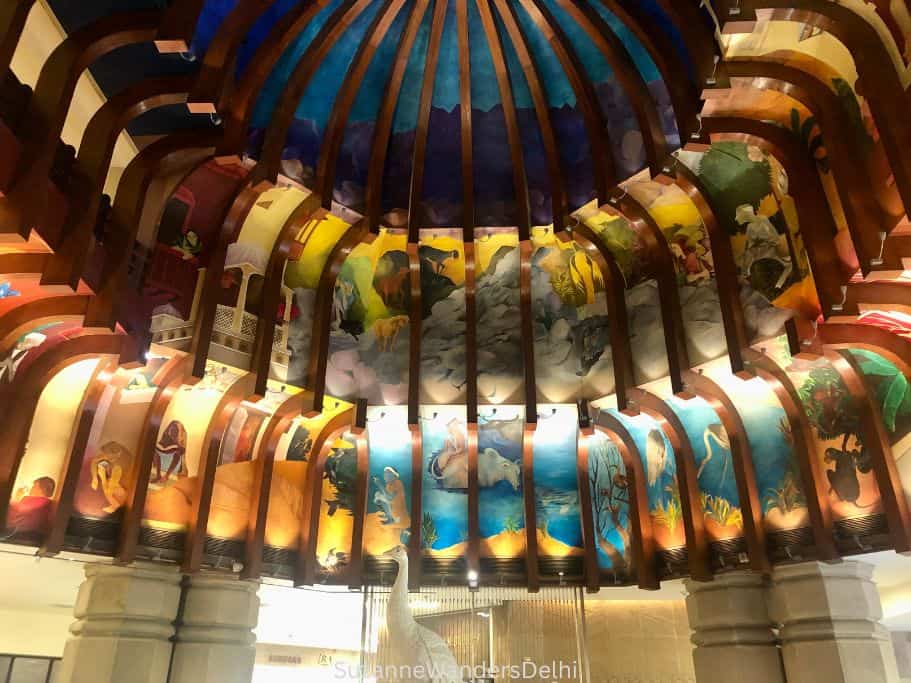
The mural depicts stories and subjects from Mauryan history. It’s a very famous painting, and if you look at it closely you can see may details of the subjects at daily life.
- Hours: 24/7 but for good light, go during the daytime
- Nearest metro station: Durgabai Deshmukh South Campus (Pink line)
29. Nehru Park
This large green space is located in the affluent neighbourhood and diplomatic enclave of Chanakyapuri. It’s one of Delhi’s best parks for dog walkers, families, joggers and yoga enthusiasts. Nehru Park is over 80 acres and well serviced with toilets, tennis courts, outdoor gym, children’s playground and two temples.
The most unusual thing about the park is a large statue of Vladimir Lenin, typical of how India is always full of surprises.
- Hours: 5:00 am – 9:00 pm (summer) & 6:00 am – 8:00 pm (winter)
- Nearest metro station: Jorbagh (Yellow line)
30. Hazrat Nizamuddin Dargah
This is one of the most spiritual and best free places to visit in Delhi. It’s the mausoleum of the powerful Sufi saint Khawja Nizamuddin Auliya. The dargah is believed to hold great power and thousands of devotees visit every week. There is a definite spiritual mysticism and energy here. It is said any wish made from the heart will be granted, regardless of religion.
This is a Muslim site but people of all faiths come to pray to the Sufi saint. Shoes must be removed and women should cover their heads.
- Hours: 5:00 am – 10:30 pm, daily
- Nearest metro station: Jawaharlal Nehru Stadium (aka JLN Stadium) (Violet line)
31. Hazrat Nizamuddin Baoli
This stepwell was built by the Sufi Saint Nizamuddin nearly 800 years ago. It is next to the dargah which bears his name. If you walk along the side of the baoli you will come to a sort of small covered bazaar in the back. The stepwell is considered sacred by many, and is one of the few in Delhi that is fed by an underground spring.
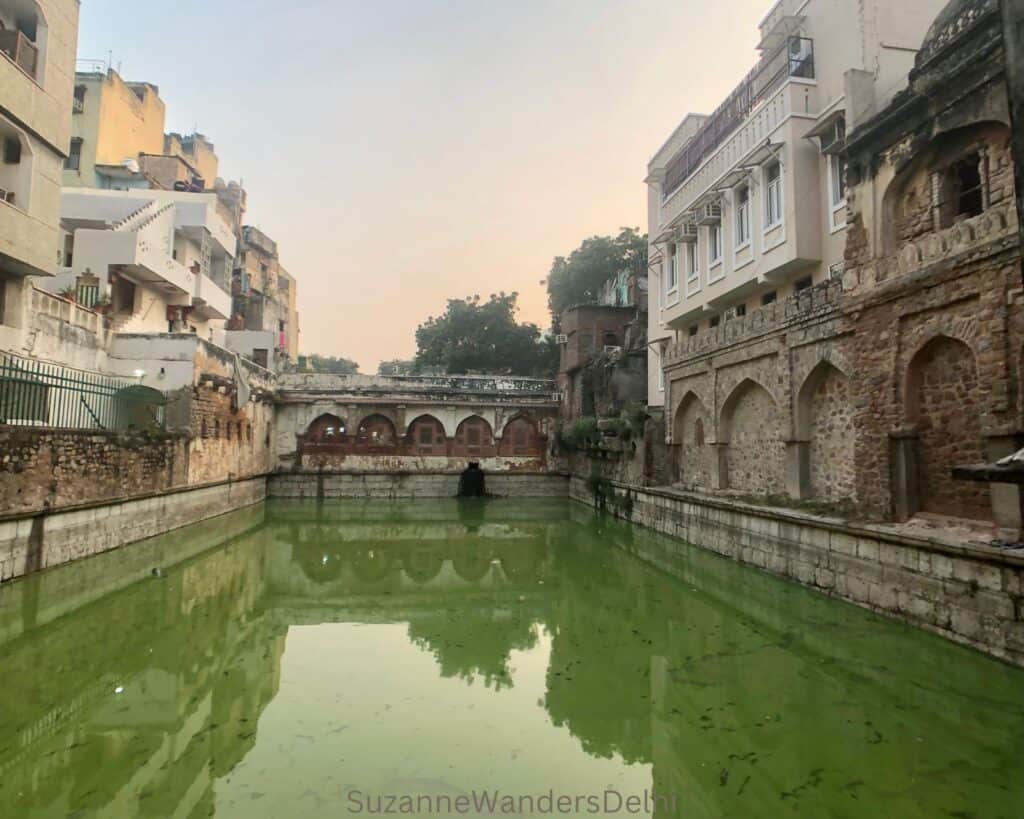
- Hours: 5:00 am – 10:30 pm, but go during daylight
- Nearest metro station: Jawaharlal Nehru Stadium (aka JLN Stadium) (Violet line)
32. Qawwali Singing at Hazrat Nizamuddin Dargah
Every evening after the maghrib namaz (evening prayers) there is Sufi Islamic devotional singing, and the qawwali singers at Hazrat Nizamuddin Dargah are legendary. The same family have sung qawwalis at this dargah for 700 years. Listening to the qawwalis in such a historic and spiritual place is a mesmerizing experience. Go a little earlier because it can get very busy.
- Hours: 6:00 pm – 7:30 pm, daily and 9:00 pm – 10:30 pm on Thursday (because the singing starts after the evening prayers, times will change marginally each day)
- Nearest metro station: Jawaharlal Nehru Stadium (aka JLN Stadium) (Violet line)
33. Chausath Khamba
From the outside this mausoleum does not look like much, but that changes as soon as you go inside. Built entirely of white marble, the design is gorgeous – 64 pillars support 25 domes, each dome carved of 68 pieces of marble. The domes are not visible from outside, the roof is flat.
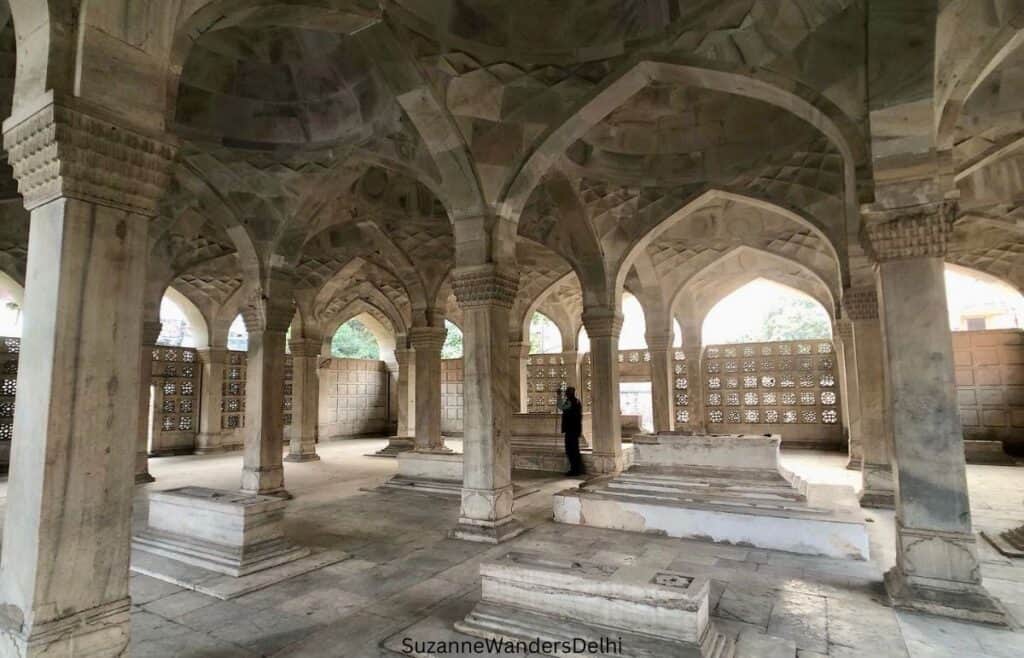
It was built in 1624 by Mirza Aziz Koka who was a governor in the Mughal court. The tomb of Mirza Ghalib (Delhi’s most famous poet) is also on the grounds.
- Hours: 24/7, but go during the day
- Nearest metro station: Jawaharlal Nehru Stadium (aka JLN Stadium) (Violet line)
34. Sabz Burj
Marooned on a busy traffic roundabout in the historic Nizamuddin neighbourhood is another Mughal gem, the Sabz Burj. You can’t miss this tomb – it has a brilliant blue and green tiled dome. Little is known about its origins, but it was likely built in 1530 as part of the Humayun complex. At one time the tomb was actually used as a police station. You can enter the tomb but will have to cross the roundabout.
- Hours: 24/7, but go during daylight
- Nearest metro station: Jawaharlal Nehru Stadium (aka JLN Stadium) (Violet line)
Free Places to Visit in South Delhi
South Delhi is one of the most historic areas of the city. It’s in this part of Delhi that hundreds of mausoleums, forts, palaces and mosques were built between the 11th and 18th centuries. This part of the list is dominated by ancient tombs and other forgotten monuments, but there are some remarkable temples too.
35. Lotus Temple
The Bahai Lotus Temple is one of the most visited religious buildings in the world. The temple resembles a lotus flower with 27 petals made from Greek marble. There are no deities or religious images inside the prayer hall. It is an expansive and calm space, beautiful in its simplicity. Currently the Lotus Temple is on the UNESCO World Heritage Tentative List. Shoes must be removed.
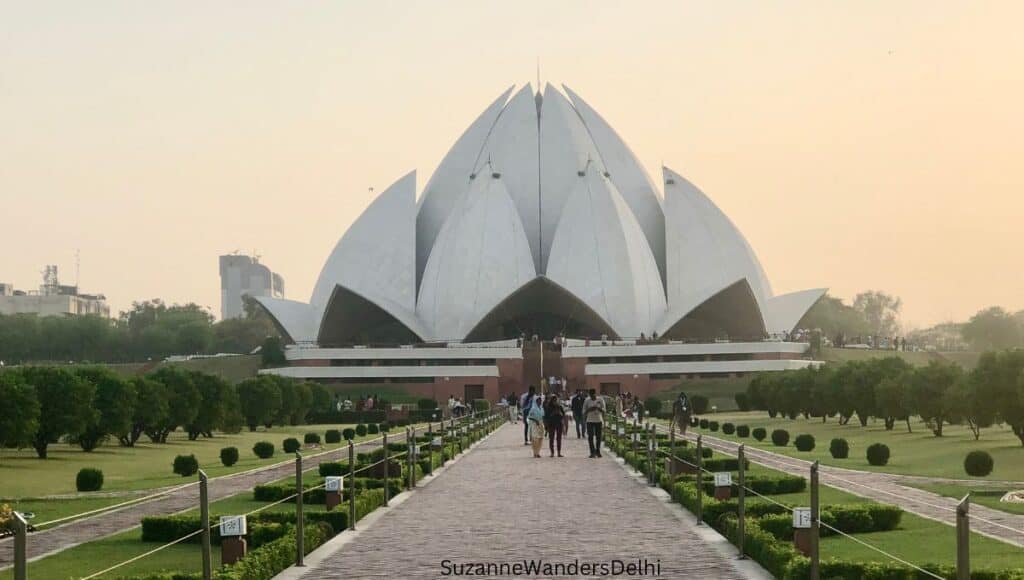
- Hours: 8:30 am – 5:00 pm, (closed Monday)
- Nearest metro station: Kalkaji Mandir (Magenta line)
36. Sri Sri Parthasarathi Mandir (ISKCON Temple Delhi)
ISKCON Temple Delhi is a lively, happy temple, dedicated to Lord Krishna. Attending an aarti (ritual prayer ceremony) is an unforgettable experience with ecstatic devotees clapping, chanting and dancing while priests shower the crowd with rose petals and sacred water. Aartis are at 7:15 am, 7:30 am, 12:30 pm, 4:15 pm, 7:00 pm and 8:30 pm. The evening ones can be a bit crazy, but it’s a friendly, joyful crowd.
ISKCON is an acronym for International Society of Krishna Consciousness and there are centres all over the world.
- Hours: 4:30 am – 1:00 pm & 4:15 pm – 9:00 pm, daily
- Nearest metro station: Nehru Place (Violet line)
37. Adilabad Fort
This is a great free alternative to Tughlaqabad Fort. Adilabad Fort was built by Mohammad bin Tughlaq, the son of the ruler who built Tughlaqabad Fort in 1326. The architecture is very similar, but on a smaller scale. Adilabad Fort hardly gets any visitors – most people don’t know it exists, though historians refer to it as the fourth fort of Delhi. The fort is not well signed, but you can reach it by walking through Kaya Maya Park.
👍 Ignore any semi-official looking tout who tell you admission is only free with a paid ticket to Tughlaqabad Fort (which is across the street) – this is a scam.
- Hours: 9:30 am – 6:00, daily
- Nearest metro station: Tughlakabad (Violet line)
38. Yogmaya Temple
This is the only temple in Delhi dedicated to the goddess Yogmaya, a re-incarnation of Lord Vishnu and sister of Lord Krishna. It’s small but beautiful, and believed to be 5,000 years old, dating back to the Mahabharata. In fact, the area where the temple is located, Mehrauli, was originally called Yoginpuram, after the goddess.
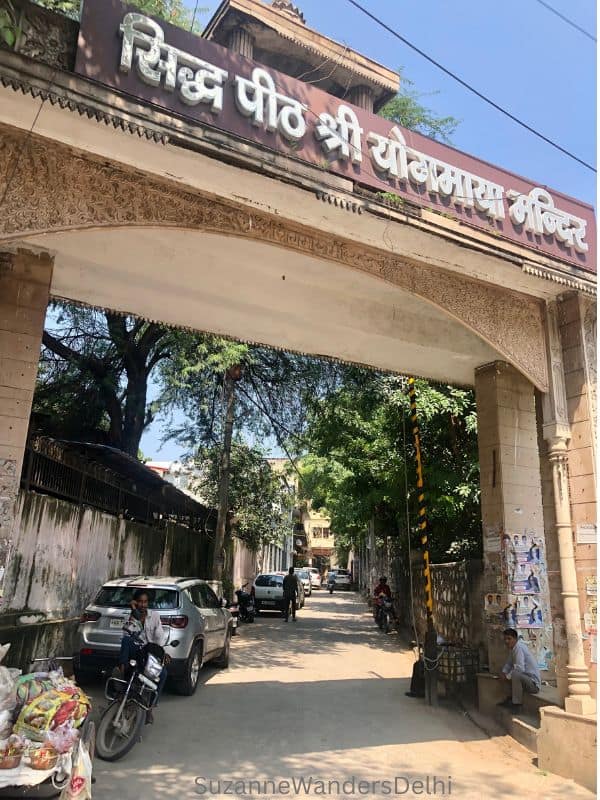
The goddess has very loyal devotees, many who reside in the neighbourhood and come daily to pray and offer sweets. The idol is usually surrounded by offerings, often arranged artfully.
- Hours: 6:00 am – 10:00 pm, daily; free
- Nearest metro station: Qutab Minar (Yellow line)
39. Zafar Mahal
This is the summer palace of the last Mughal ruler of India, Bahadur Shah Zafar. It’s located in the urban village of Mehrauli, and is identifiable by huge, arched wooden doors (large enough for an elephant to pass through).
The palace is currently in a ruinous state, completely encroached upon by new construction and overtaken by drinkers and gamblers at times. The Archeological Society of India finally has plans to restore it after high profile historians repeatedly complained about the dilapidated condition.
- Hours: 24/7, but go during the daytime
- Nearest metro station: Qutab Minar (Yellow line)
40. Jahaz Mahal (Ship Palace)
The Jahaz Mahal was built by Sultan Ghiyas-ud-din Khilji to accommodate the women of the royal harem, rumoured to number up to 500. At the time the palace was flanked by two ponds and its reflection looked like a ship. It was built during the Lodhi dynasty, 1451-1526 and is still in pretty good condition.
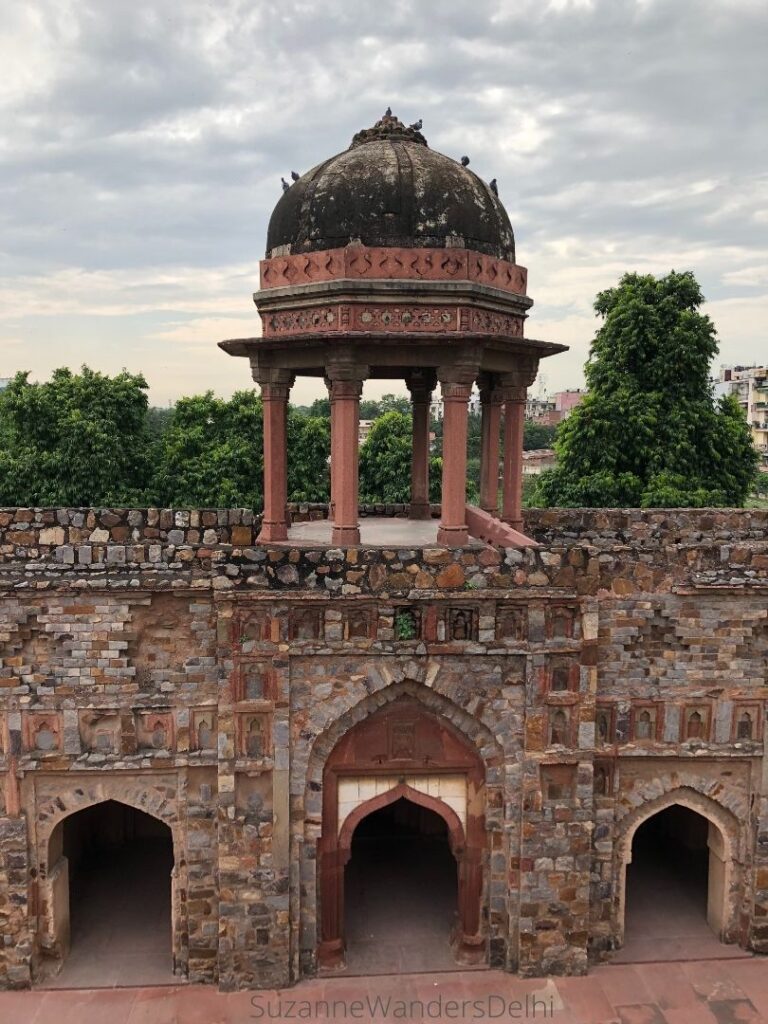
Try to get up to the roof by the steep stairs – I have done this many times in the past, but the last time I was there the caretaker told me it wasn’t allowed.
- Hours: 24/7, but go during the daytime
- Nearest metro station: Chhattarpur (Yellow line)
41. Kururttha-Khmeraram (Cambodian Monastery New Delhi)
This is the only Cambodian temple in Delhi and is unique in the city. The exterior is golden and intricately carved in classical Khmer style. The interior is simple but beautiful with a large golden Buddha on a lotus flower. It was established by the Khmer-Hindu Theravada Buddhist Society in 1994 and is maintained by the Khmer Buddhist community. Remove shoes before entering.
- Hours: 6:00 am to 12:00 pm & 1:30 pm to 6:00 pm, daily
- Nearest metro station: Chhattarpur (Yellow line)
42. Shri Aadya Katyayani Shaktipith Mandir (Chhattarpur Temple)
Along the main road in the Chhattarpur area you will see temple complexes on both sides (often collectively referred to as Chhattarpur Temple). The most famous and important of these is Shri Aadya Katyayani Shaktipith Mandir, which is dedicated to the goddess Shakti. Shakti is the mother goddess, the sum of all female gods.
The architecture is a combination of South and North Indian styles with intricate stone work, but the treatment of the goddess is unique. Inside the temple near the prayer hall is a living room for the goddess, complete with nine chairs, one for each of her nine avatars, as well as a bedroom with a silver bed, dressing table and sword. This temple gets incredibly busy during the two Navratra seasons.
- Hours: 6:00 am to 10:00 pm, daily (open 24/7 during Navratra)
- Nearest metro station: Chhattarpur (Yellow line)
43. Isha Yoga Centre, New Delhi
This is one of Delhi’s best ashrams, and it’s on a lovely campus. The Isha Foundation was started by the charismatic Sadhguru and has a massive following, about 11 million people worldwide. Many devotees come here for a few hours to meditate and pray at the temple. The Isha Foundation now has centres all over the word, but this is the one of the main ones.
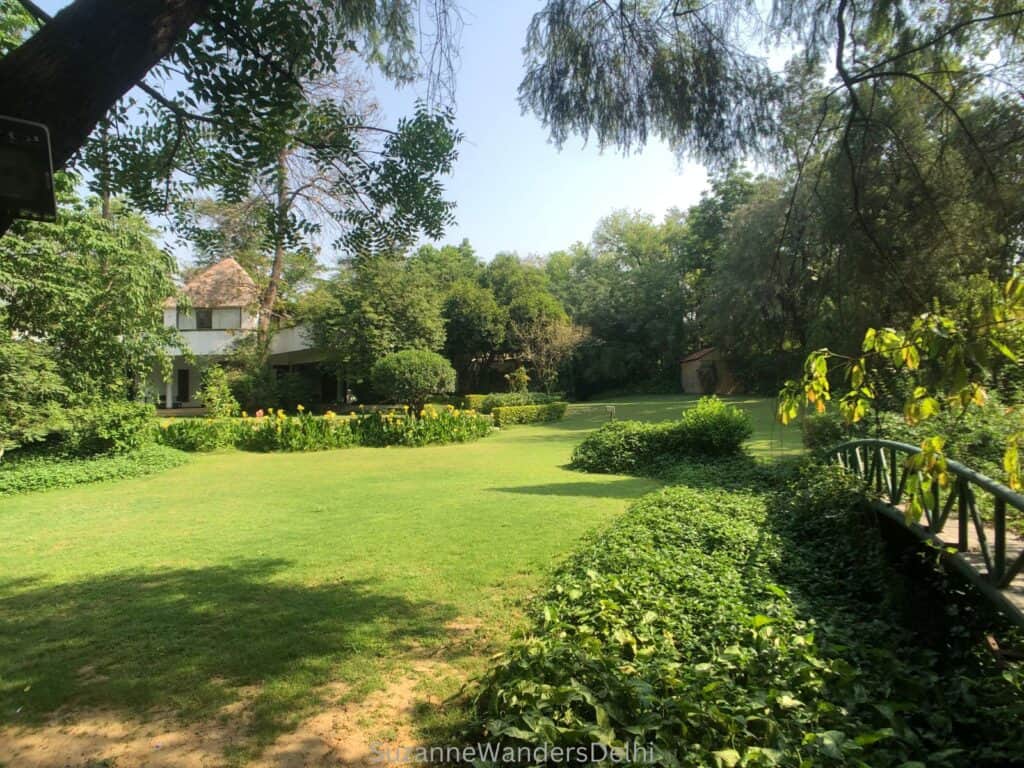
- Hours: 7:00 am – 11:00 am & 5:00 pm – 8:00 pm, daily
- Nearest metro station: Sultanpur (Yellow line)
44. Watch the Planes from Mangal Mahadev Birla Kanan (Shivaji Murti)
I much prefer this spot to watch planes land at Indira Gandhi International Airport than Jumbo Point. The outdoor temple complex is directly across the street from the runways and the planes come in very low. The temple itself is more like a park with gardens and large statues of Hindu gods. You must remove shoes to enter the temple, but you can watch the planes from entrance area without going into the park.
- Hours: 6:00 am – 10:00 pm, daily
- Nearest metro station: Delhi Aerocity (Orange/Airport Express line)
45. Hauz Khas Village
Hauz Khas Village is Delhi’s most gentrified urban village. It’s a pedestrian friendly, trendy neighbourhood of winding lanes with shops, art galleries, boutiques, restaurants and clubs. Delhi has many urban villages which were given special status when Delhi was designated as the nation’s capital in 1911. These villages were exempt from urban and corporate building laws, resulting in unfettered construction, crumbling buildings and roaming pigs.
If you don’t mind paying the INR 300 admission, you can explore Hauz Khas Fort, the beautiful complex at the end of the road. If you want to see it for free, go next door to Deer Park and take the walking path that goes around the reservoir for excellent views.
- Hours: 24/7, but go during the daytime
- Nearest metro station: IIT (Magenta line) or Green Park (Yellow line)
46. Deer Park
Deer Park is a huge green space, part of Delhi’s green belt. From the walking path that goes around the reservoir you can see Hauz Khas Fort for free. There are several historic monuments in Deer Park built between 1320 and 1501, such as the Bagh i Alam Ka Gumbad, pictured.
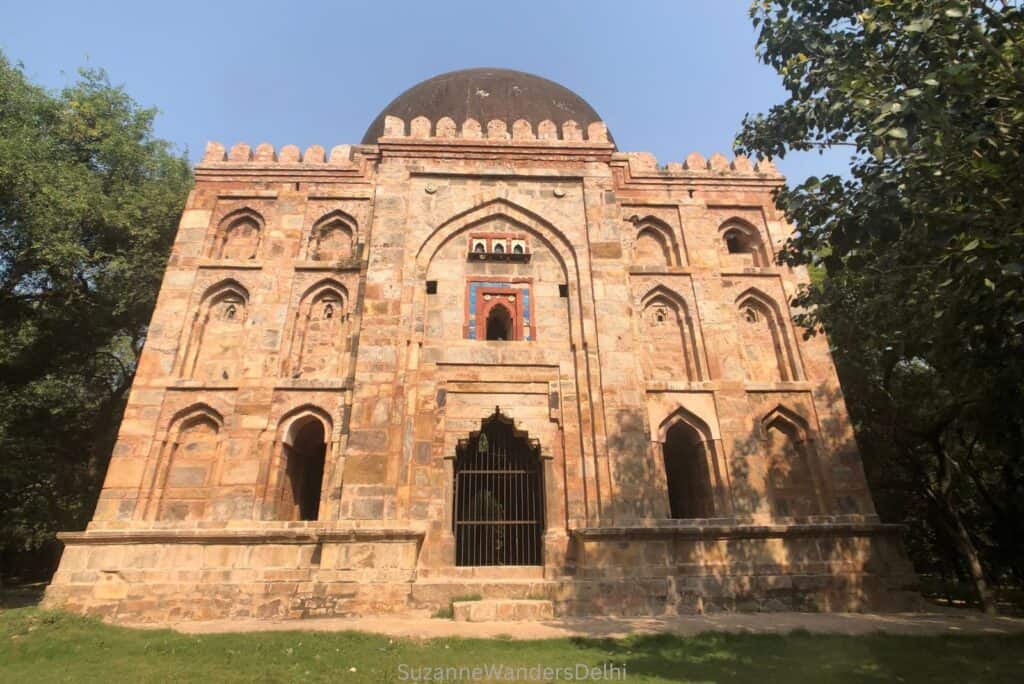
- Hours: 5:00 am – 8:00 pm (summer) & 5:30 am – 7:00 pm (winter)
- Nearest metro station: IIT (Magenta line) or Green Park (Yellow line)
47. Shri Neelanchal Seva Sangh (Shri Jagannath Mandir)
This small but well known South Indian temple very near Hauz Khas Village is dedicated to the Hindu god Jagannath. Jagannath is an avatar of Lord Krishna, popular in South India. It’s a small but beautiful temple with several shrines.
During the Rathyatra festival statues of Lord Jagannath, his brother Lord Balabhadra, and sister Goddess Subhadra are paraded through the streets in grand chariots. The temple is especially beautiful at this time, blanketed in marigold flowers.
- Hours: 4:30 am – 1:30 pm & 4:00 pm – 10:00 pm (summer); 5:30 am – 1:30 pm & 4:00 pm – 9:00 pm (winter)
- Nearest metro station: Green Park (Yellow line)
48. Tombs of Green Park
Set among the affluent neighbourhood of Green Park is a treasure trove of forgotten 15th century tombs. There are 6 monuments all within walking distance of each other, and unlike many of Delhi’s forgotten historic sites, these ones are relatively free from encroachment and in good condition. See the map for names and exact location of these monuments.
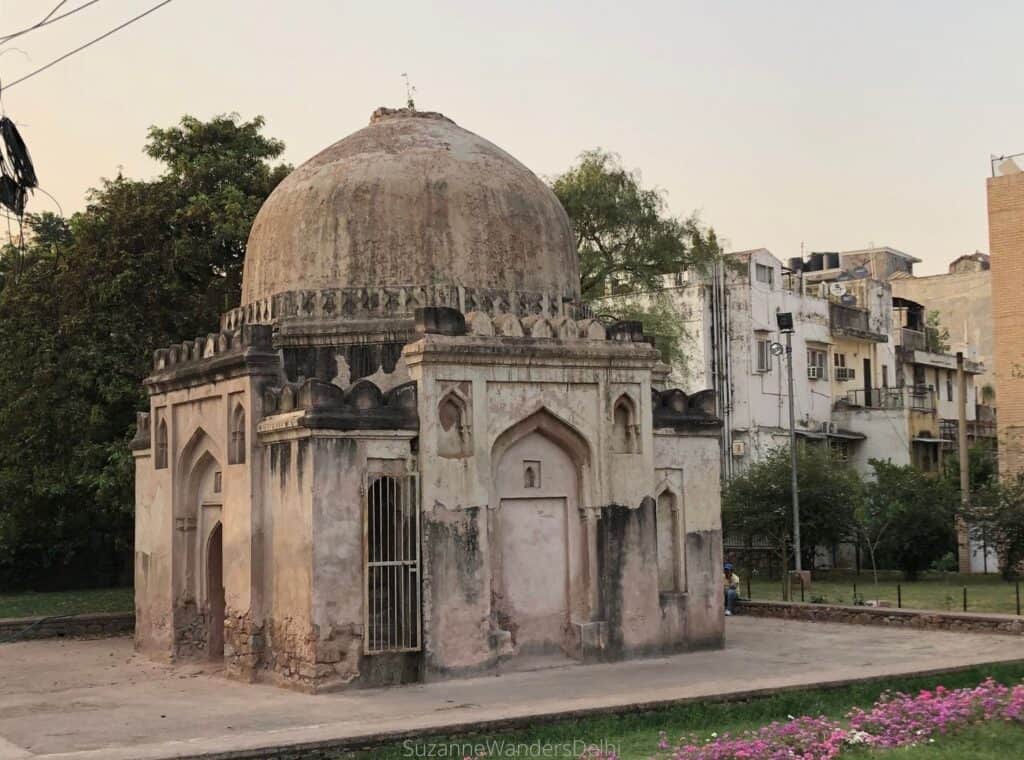
- Hours: 24/7, but go during the day
- Nearest metro station: Green Park (Yellow line)
49. Shahpur Jat
Shahpur Jat is a small urban village wedged between several upscale South Delhi neighbourhoods. It has become a hub for up and coming fashion designers, especially wedding fashion. Shahpur Jat was built on the site of the ancient city of Siri (circa 1303) and some of the ruins from Siri are still standing within the village, such as the ancient city wall and the ruins of Tohfe Wala Gumbad. There’s also some great art murals.
- Hours: 24/7, but go during the day
- Nearest metro station: Hauz Khas (Yellow or Magenta line)
50. Begampur Mosque
This forgotten treasure of the Tughlaq era will astound you because of its immense size and most prominent feature, 64 domes. This is one of 7 mosques built in the 14th century by a prime minister for the ruler Feroz Shah Tughlaq. At the time it was built, it was the largest mosque in Delhi, only surpassed by Old Delhi’s Jama Masjid two centuries later.
The most striking thing about Begampur Mosque is that a monument of this size could be so neglected. It is regularly used as a cricket pitch and locals frequently take pieces of masonry to use in their own building projects.
- Hours: 24/7, but go during the day
- Nearest metro station: Hauz Khas (Yellow or Magenta line)
51. Khirki Masjid
Khirki Masjid is a spectacular hidden gem and one of the best free places to visit in Delhi. It was built in 1351–1354 during the Tughlaq period. The architecture is unusual for a mosque in that it’s built as a fortress. The interior is a labyrinth of columns and arches which seem to go on forever. Make sure you find the caretaker and ask him to let you inside if the gate is locked.
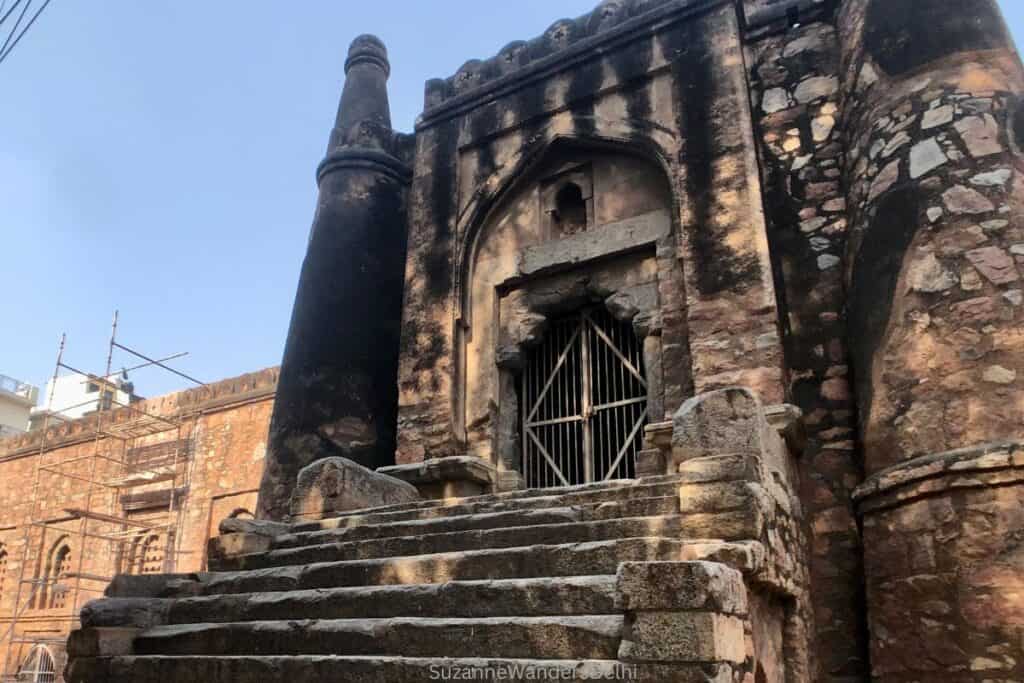
- Hours: 11:00 am – 6:00 pm (the hours when the caretaker is there)
- Nearest metro station: Malviya Nagar (Yellow line) or Panchsheel Park (Magenta line)
52. Satpula Bridge
Just down the main road from Khirki Masjid, is a remarkable ancient water dam from the Tughlaq dynasty, known as Satpula Bridge. It was built as part of the 4th medieval city of Delhi, Jahanpanah, to harvest water and act as part of the city’s defensive wall.
If you ask locals for Satpula Bridge, they won’t know it – refer to is as ‘the wall’ and they’ll be able to point you in the right direction. You may come across a small locked gate near the footpath going down to the dam, just jump over it, everyone does.
- Hours: 24/7, but go during the day
- Nearest metro station: Panchsheel Park (Magenta line)
53. Kotla Mubarakpur Complex
The urban village of Kotla Mubarakpur and the surrounding area is a treasure trove of tombs from the Lodhi and Sayyid eras.

Some are protected in a park-like setting among apartment complexes and commercial buildings. Others are in the middle of an urban village, practically swallowed up by surrounding haphazard construction. Locating those requires trekking through a warren of back lanes and alleys – use the map to help.
- Hours: 24/7, but go during the day
- Nearest metro station: South Extension (Pink line)
54. Kiran Nader Museum of Art
The Kiran Nadar Museum of Art is a private museum exhibiting modern and contemporary Indian art. The museum currently has over 8,000 pieces, with a focus on contemporary Indian painters (post-independence). It hosts a variety of changing exhibits and is one of the best free places to visit in Delhi for art lovers. It was started by art collector Kiran Nader who wanted to bring this genre of art to the Indian public.
Check the museum website for current exhibits: https://www.knma.in/current.
- Hours: 10:30 am – 6:30 pm Tuesday to Sunday (closed Monday and public holidays)
- Nearest metro station: Malviya Nagar (Yellow line)
55. Uttara Swami Malai Mandir (R K Puram)
Often simply referred to as Malai Mandir, this South Indian temple is dedicated to Lord Swaminatha. Construction began in 1961 after Lord Swaminatha appeared in a devotee’s dream, indicating a small, secluded hill that he wished for his earthly home.
The temple is built entirely of granite stones without the use of cement or mortar. An adhesive of lime, sand and molasses was used to fill the crevices between stones. Architecturally, it resembles the Chola style temples of Tamil Nadu, India.
- Hours: 6:30 am – 11:00 am & 5:00 pm – 9:00 pm (Monday to Thursday), 6:30 am – 12:00 pm & 5:30 pm – 9:00 pm (Friday to Sunday)
- Nearest metro station: Munirka (Magenta line)
56. Wazirpur Gumbad Complex
This is a great little complex of monuments from Lodhi dynasty (1451-1526). It consists of five tombs, two wall mosques, a stepwell and a grave platform all in one compact park. Very little know is about these monuments – we have no idea who the tombs were built for or the exact dates. If looking on Google maps for the location, it’s in Sector 5 of RK Puram and shows on the map as Sector 5, RK Puram Gumbad.
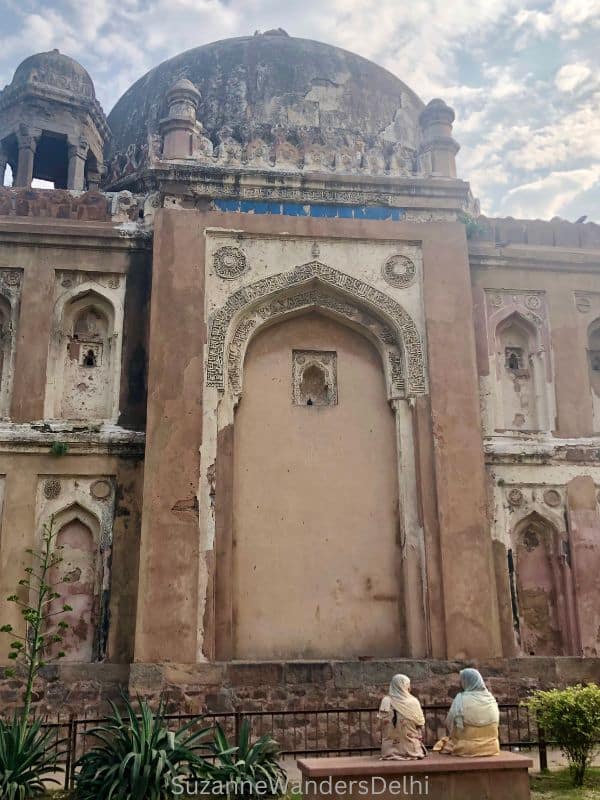
- Hours: 24/7, but go during the day
- Nearest metro station: Munirka (Magenta line)
Free Places to Visit in Old Delhi
Old Delhi is the most historic, but chaotic part of the city. Old Delhi is like walking through a living history lesson. It’s congested, noisy, and feels like semi-organized mayhem, but don’t skip it! Just pace yourself and use my self-guided free DIY heritage walk of Old Delhi.
57. Chandni Chowk
Chandni Chowk – the most famous street in Delhi! Chandni Chowk is a pedestrian friendly heritage zone and closed to motorized traffic 9:00 am to 9:00 pm daily. The street itself runs from the Red Fort to Fatehpuri Masjid, but Chandni Chowk also refers to the entire area around this main road, including the specialty bazaars found down the lanes. It’s a glimpse into Delhi life you will never forget.
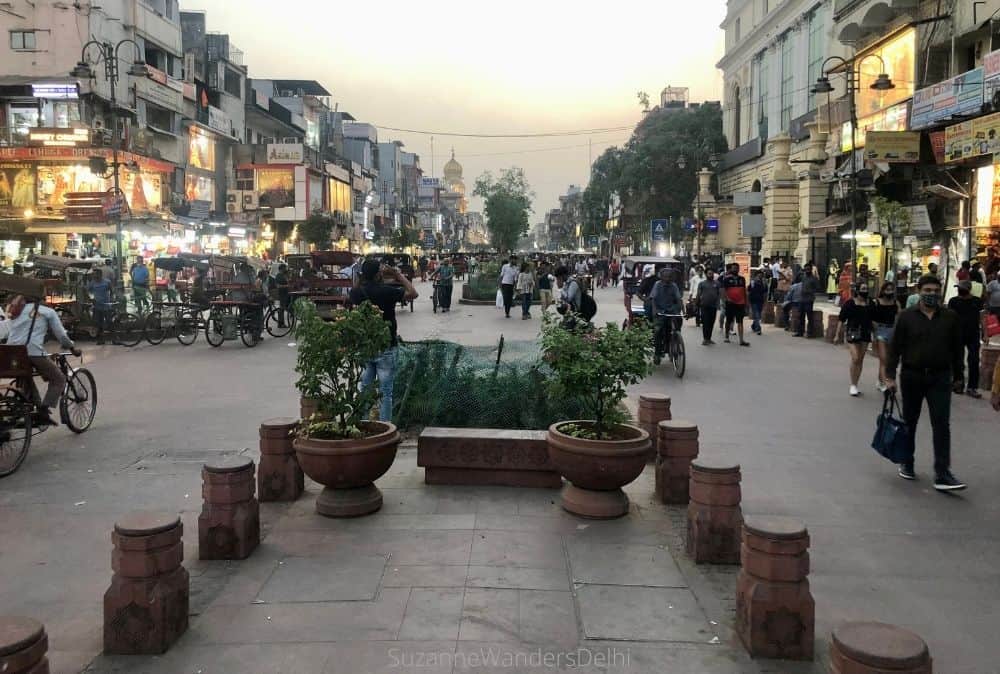
- Hours: 24/7 (pedestrian only 9:00 am – 9:00 pm), daily
- Nearest metro station: Chandni Chowk (Yellow line)
58. Specialty Markets of Chandni Chowk
The lanes of Chandni Chowk are full of unique and historic markets. Some of these markets have been there since the time of Shah Jahan in the 1600s. The most famous of these is Khari Baoli, the spice market. It’s the largest whole sale spice market in Asia. You’ll find it near Fatehpuri Masjid at the far end of Chandni Chowk.
Other historic markets are Dariba Kalan (silver market), Kinari Bazaar (wedding market), and the vibrant Chawri Bazaar (stationary market). Make sure to check out the group of nine Jain havelis with beautiful painted doors in Kinari Bazaar.
- Hours: 11:00 am – 7:00 pm (hours can vary depending on market) Monday to Saturday (closed Sunday)
- Nearest metro station: Chandni Chowk (Yellow line)
59. Haveli Mirza Ghalib
This is the historic home of the last, and some say the greatest Mughal poet, Mirza Ghalib. Ghalib lived through the decline of the Mughal empire and was a poetry tutor of the last ruler, Bahadur Shah Zafar. The haveli is located in the heart of Old Delhi, and although it was much cleaner and more beautiful during Ghalib’s time, the narrow lanes and architecture have not changed much.
You can also visit Ghalib’s grave in Chausath Khamba.
- Hours: 10:00 am – 6:00 pm, Tuesday to Sunday (closed Monday)
- Nearest metro station: Chandni Chowk (Yellow line)
60. Shri Digambar Jain Lal Mandir & Bird Hospital
This is the oldest Jain temple in Delhi. It was built on land Shah Jahan gave to the Jain community in 1656. It’s a beautiful temple but the most unique thing is the attached charitable bird hospital. Every year the hospital treats 15,000 birds completely free of charge and anyone can visit.
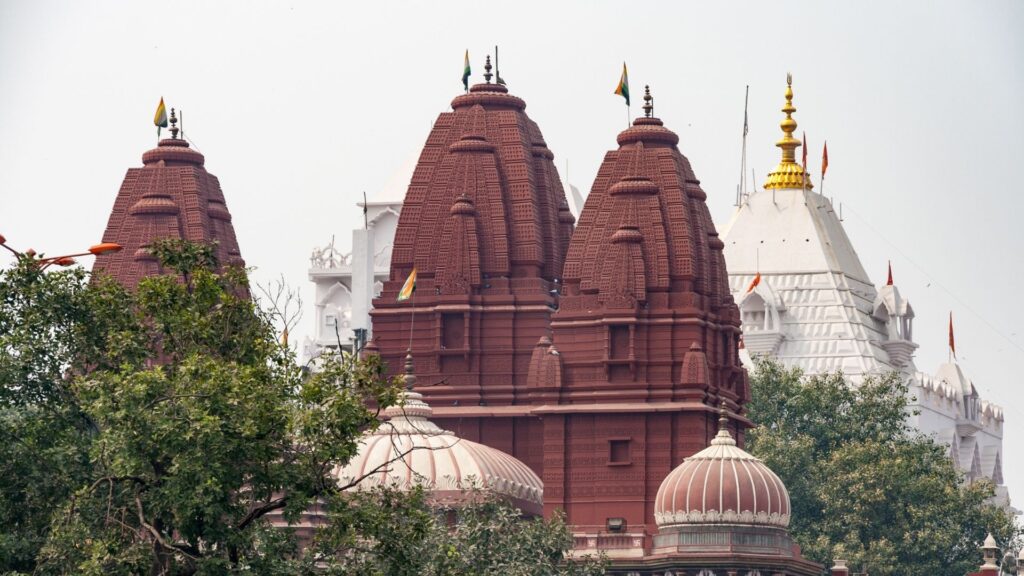
To enter the temple, shoes and leather items must be removed. Jains are strict vegetarians that do not even eat root vegetables, as pulling out the root kills the living organism.
- Hours: 5:30 am – 11:30 pm & 6:00 pm – 9:30 pm (summer); 6:00 am – 12:00 pm & 5:30 pm – 9:00 pm (winter)
- Bird Hospital hours: 8:00 am – 8:00 pm, daily
- Nearest metro station: Lal Quila (Violet line)
61. Gurudwara Sis Ganj Sahib
Gurudwara Sis Ganj Sahib is one of the most important Sikh temples in Delhi. The shrine is on the exact spot the ninth Sikh Guru, Guru Tegh Bahadur, was beheaded in 1675 on the order of ruler Aurangzeb. The gurudwara takes its name from the Punjabi word for head, ‘sis.’
It’s definitely one of the most beautiful gurudwaras in the city and everyone is welcome to pray and have langar, the free community meal. Visitors must cover their heads and remove shoes before entering. There are bandanas available to borrow, if needed.
- Hours: 24/7 but go during the daytime
- Nearest metro station: Chandni Chowk (Yellow line)
62. Jama Masjid
Shah Jahan built the Jama Masjid and used the mosque during his reign, 1628-1658. It is the largest mosque in Delhi and can accommodate 25,000 worshipers at one time. It’s an imposing structure, taking up an entire block of Old Delhi.
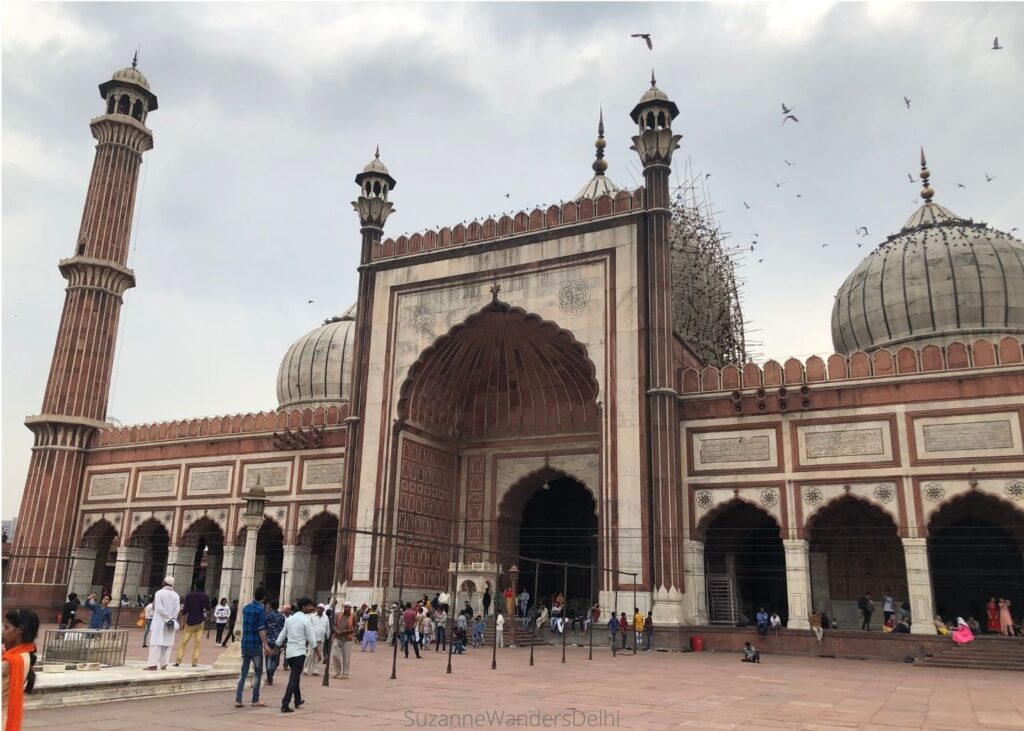
This is a working mosque and the dress code is strict: no shoes, women must cover their heads, and shoulders, legs and arms should be covered (this goes for men too). There are sarongs available to borrow if needed. To avoid paying the shoe minder, put your shoes discretely in your bag (many Indians do this). Entrance is free, but the mosque charges INR 300 to bring a camera in.
- Hours: 7:00 am – 12:00 pm & 1:30 pm – 6:30 pm, daily
- Nearest metro station: Jama Masjid (Violet line)
63. Fatehpuri Masjid
This mosque was built for Fatehpuri Begum in 1650, one of Shah Jahan’s wives (but not the favourite – his favourite was Mumtaz Mahal, the one he built the Taj Mahal for). The mosque has a colourful history. During the Rebellion of 1857 British troops occupied the mosque, the mosque was then auctioned off and bought by a wealthy Hindu merchant only to be sold back to the British 20 years later, and finally returned to the Muslim community in 1877.
- Hours: 6:00 am – 8:00 pm, daily
- Nearest metro station: Chandni Chowk (Yellow line)
Free Places to Visit in North Delhi
Immediately to the north of Old Delhi, this is where much of the British population settled, and where the British army had their military camps and defensive positions during the Rebellion of 1857.
64. National Gandhi Museum and Library
The National Gandhi Museum and Library has an impressive and moving collection of Mahatma Gandhi’s personal items, many of which were collected immediately following his assassination. Gandhi is still revered across India – his birthday, October 2nd, remains a national holiday.
Unlike many museums, this one was not built and funded by large donations. It was funded by thousands of small donations from Gandhi’s devoted followers, many of whom earn very little.
- Hours: 10:00 am – 5:00 pm, Tuesday to Sunday (closed Monday)
- Nearest metro station: Delhi Gate (Pink line)
65. Gandhi Memorial (Raj Ghat)
If you only visit one site devoted to Mahatma Gandhi, this should be it. It’s one of the top free places to visit in Delhi. This peaceful place is where Gandhi’s last rites were performed, the day after his assassination on January 30, 1948. Many world leaders and dignitaries have paid their respects at Raj Ghat.
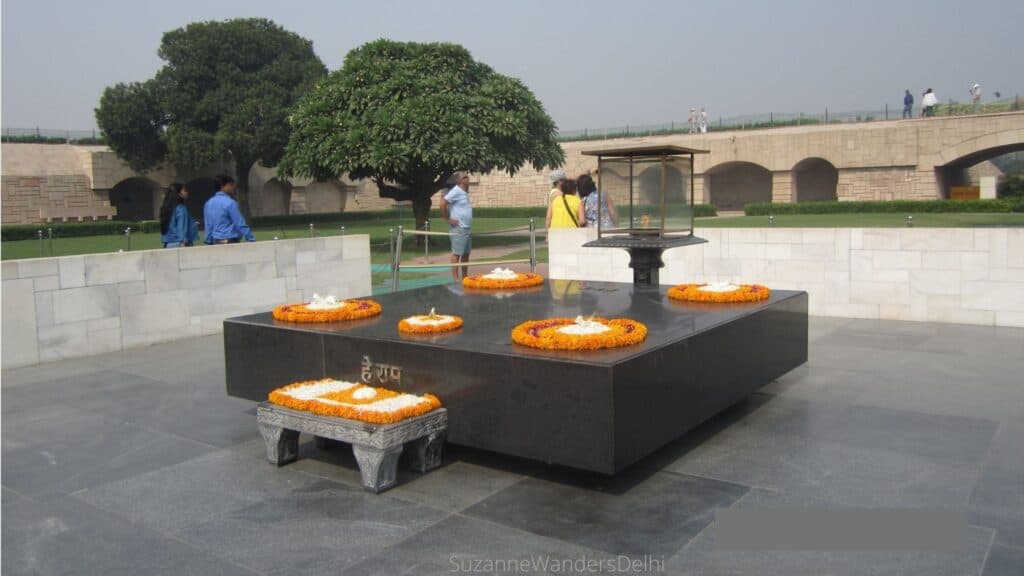
The memorial itself is simple – a black marble platform meant to reflect the simplicity of Gandhi’s life. It is always adorned in flowers and an eternal flame. Gandhi Darshan is directly across the street – an exhibition hall and park devoted to Gandhi (also free).
- Hours: 6:30 am – 6:00 pm, daily
- Nearest metro station: Delhi Gate (Pink line)
66. Partition Museum
The museum is an absolute must for anyone wishing to understand India and its people. Partition was the most defining and catastrophic moment in recent Indian history. On August 14, 1947 India was divided into Pakistan and India, resulting in one of the most violent exchanges of population in history. To this day there remains distrust and hostility between the two countries.
Tickets are free, but issued by registration on the museum website: www.partitionmuseum.org. It’s located on the Ambedkar University grounds.
- Hours: 10:00 am – 5:00 pm Tuesday to Sunday (closed Monday)
- Nearest metro station: Lal Quila (Violet line)
67. Nicholson Cemetery
If you are interested in the history of the British in India or historic cemeteries you will love this place. It holds 2,400 graves dating back to 1857. The cemetery is named for the infamous British war hero, John Nicholson, who was instrumental in defeating the Indians during the Rebellion of 1857.
This is the oldest Christian cemetery in the city, but many Indians see it as a reminder of the worst time in Delhi’s history. This has sidetracked any plans of restoration or preservation.
- Hours: 8:00 am – 6:00 pm (summer) & 9:00 am – 5:00 pm (winter)
- Nearest metro station: Kashmere Gate (Violet or Red line)
68. Qudsia Bagh
Qudsia Bagh was a beautiful palace and gardens built for a Mughal queen in 1748. The palace is gone (destroyed by the British during the 1857 Rebellion) but the mosque, entrance gate and two pavilions survived. It’s amazing to find this kind of quiet green space in possibly the noisiest and least attractive part of Delhi.
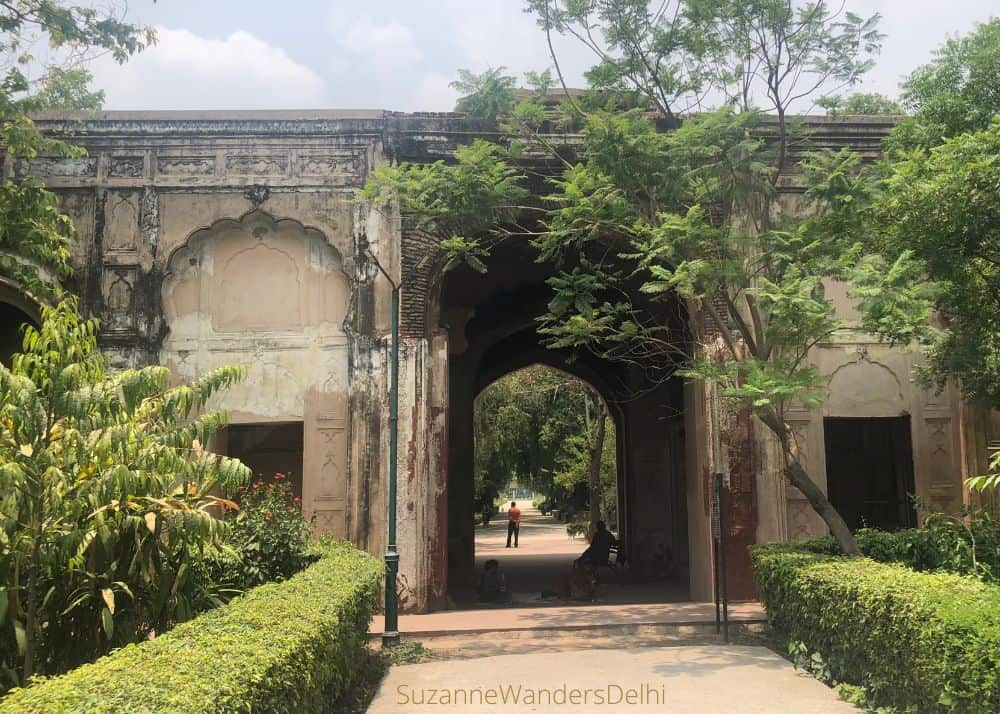
- Hours: 24/7, but go during the day
- Nearest metro station: Kashmere Gate (Violet or Red line)
69. Kashmiri Gate
At one time the old city of Delhi (called Shahjahanabad) was surrounded by a defensive wall and 14 gates. Kashmiri Gate is one of the few gates that remain. It was built in 1638. The gates were named for the cities or regions they faced, and Kashmiri Gate faced Kashmere.
Indian soldiers used Kashmiri Gate as a defensive position in the Rebellion of 1857 and cannonball volleys were issued at and from the gate, resulting in damage that can still be seen today.
- Hours: 24/7, but go during the day
- Nearest metro station: Kashmere Gate (Violet or Red line)
70. Flagstaff Tower
Flagstaff Tower is now infamous as the place were British civilians took shelter and sought refuge from attacking Indian rebels during the 1857 Rebellion. It was originally built as a signal tower, but its fort-like structure and location away from the area of combat made it an ideal safe haven while families waited for the British army to arrive from nearby Meerut.
It’s now part of the British Raj heritage trail.
- Hours: 24/7, but go during the day
- Nearest metro station: Vidhan Sabha (Yellow line)
71. Mutiny Memorial
One of the British memorials in Delhi, the Mutiny Memorial commemorates the soldiers who lost their lives fighting for the Raj during the 1857 Rebellion. It was constructed in 1863 and is a four-tiered Gothic style monument made entirely of sandstone. It’s one of the important sites on the British Raj heritage trail.
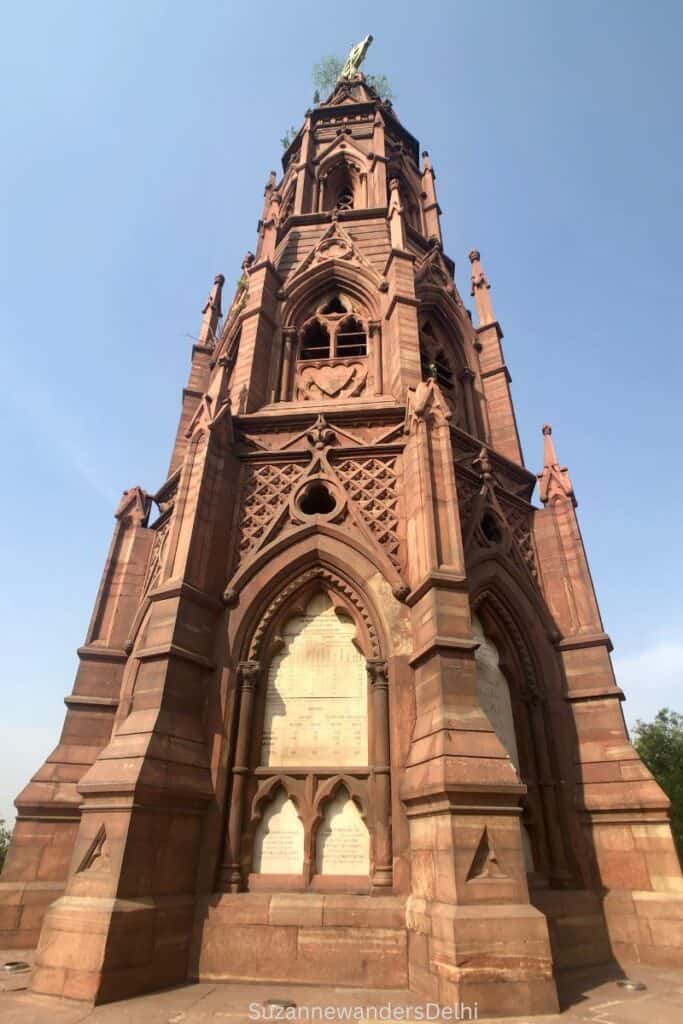
- Hours: 24/7, but go during the day
- Nearest metro station: Tis Hazari (Red line)
72. Manju ka Tilla
Majnu ka Tilla, Delhi’s Little Tibet, is home to 3,500 second generation Tibetan exiles. Tibetans started coming to Delhi in 1959 after the Dalai Lama was exiled in northern India.
This little colony has a very different vibe, lanes are strung with Tibetan prayer flags and there’s two Buddhist temples. You will find all kinds of Tibetan restaurants and shops selling Buddhist and Tibetan items.
- Hours: 24/7, but go during the day
- Nearest metro station: Vidhan Sabha (Yellow line)
73. Ladakh Budh Vihar
This traditional Tibetan monastery is decorated with paintings and thangkas (painted religious scrolls) depicting the life and teachings of Buddha with a large, golden Buddha in the centre. It was built in 1963 to support the Tibetan and Ladakhi (Ladakh a state in northern India) communities that settled nearby. It’s one of the more unique free places to visit in Delhi.
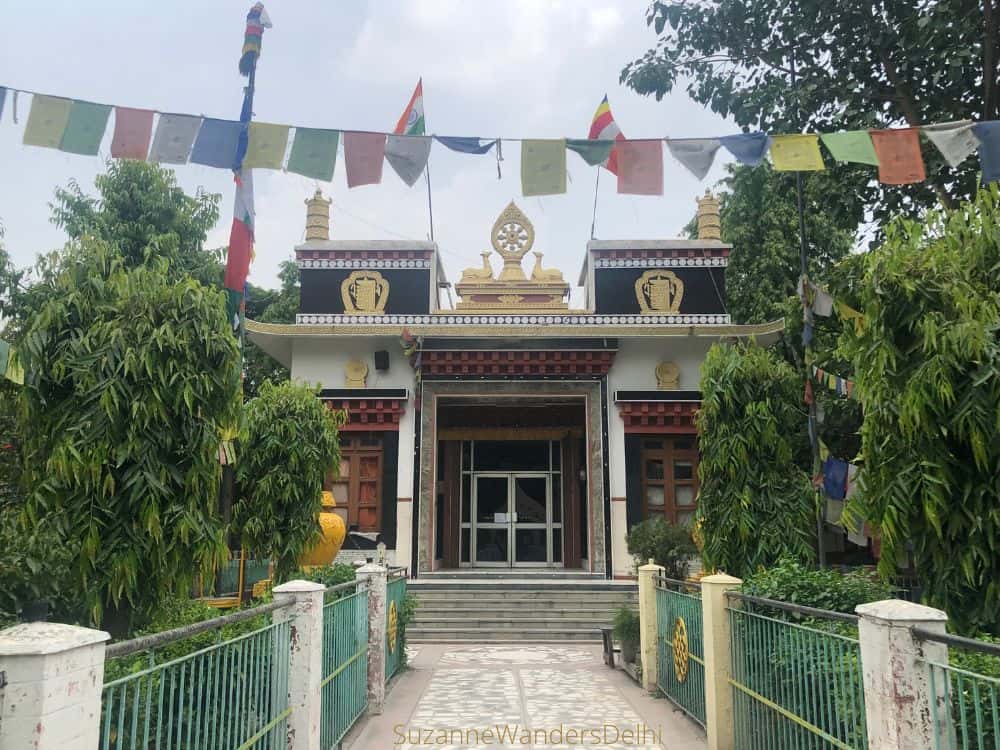
- Hours: 8:00 am – 7:00 pm, daily
- Nearest metro station: Civil Lines (Yellow line)
Free Places to Visit in East Delhi
There aren’t many sites in East Delhi, it’s mostly made up of residential and industrial areas, but there are a couple of free places to visit that are notable.
74. Swaminarayan Akshardham
This stunning temple is one of the largest Hindu temples in the world. The temple is made entirely of pink and white marble and sandstone. Both the exterior and interiors are exquisitely carved by hand, from floor to ceiling. It’s an absolute masterpiece and one of the most amazing free places to visit in Delhi.
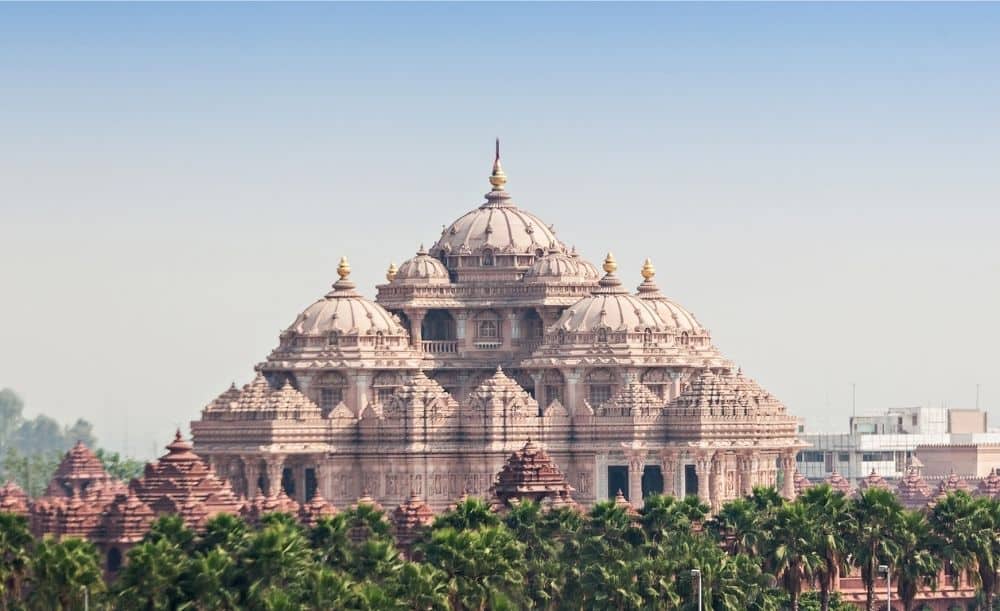
Photography is prohibited and all electronics must be left in the secured storage. Dress very modestly – shoulders, chest and upper arms and legs must be covered.
- Hours: 10:00 am – 7:00 pm Tuesday to Sunday (closed Monday)
- Nearest metro station: Akshardham (Blue line)
75. Ghazipur Flower Market
This is India’s largest wholesale flower market and it’s a dream for photographers. The swaths of blooms are everywhere and make for stunning pictures. It also smells amazing! You will find flowers from India, South Africa, Holland, New Zealand and Thailand here.
The action starts early at 4:00 am, and the market is practically shut down by noon. If you want to see the place in full swing and get some great deals on flowers, go by 5:00 am.
- Hours: 3:00 am – 12:00 pm, daily
- Nearest metro station: Kaushambi (Blue line)
Free Places to Visit in West Delhi
West Delhi is largely residential, but there are a few free places to visit worth seeing.
76. Kumhar Colony
This little pocket in Uttam Nagar is like stepping back in time. Mounds of clay line the lanes, stacks of terra cotta pottery are everywhere, and down the lanes you can see potters at their wheels.
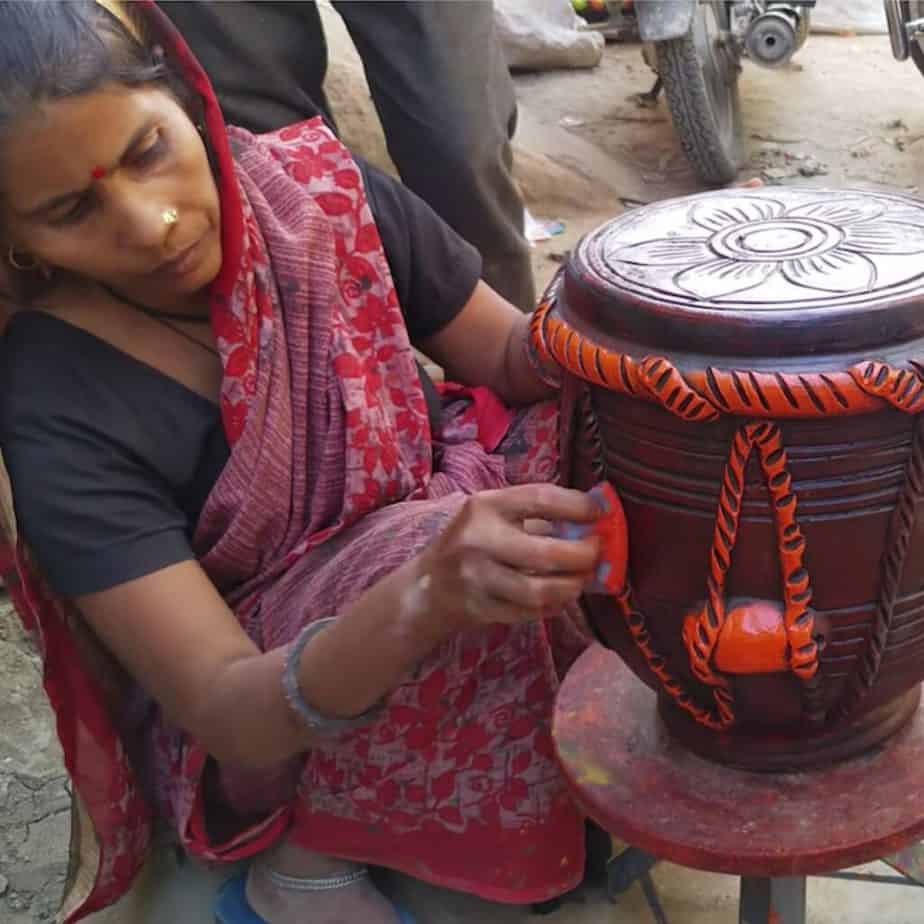
Because of the intense Delhi heat, the kilns are kept on the roof-tops and fired up at night. Recently many fire kilns have been shut down for environmental reasons. Potters have been urged to switch to gas or electric kilns but most can’t afford them. Go see this little colony now, before the kilns are completely shut down.
- Hours: 9:00 am – 9:00 pm, daily
- Nearest metro station: Uttam Nagar East (Blue line)
77. Sulabh Museum of Toilets
This is a serious museum dedicated to the history of the toilet. As quirky as it sounds, it has an interesting collection of rare and bizarre toilets, photos and objects. But the museum has a higher mission – to educate and change public policy regarding sanitation.
Social reformer Dr. Bindeshwar Pathak started the museum and has worked extensively to remove the social stigma attached the Dalit caste (the ‘untouchables’), and make toilets assessable to all Indians everywhere.
- Hours: 10:00 am – 6:00 pm, Monday to Saturday & 10:00 am – 5:00 pm, Sunday
- Nearest metro station: Dashrath Puri (Magenta line)
78. Delhi War Cemetery & Delhi Cantonment Christian Cemetery
These are two cemeteries built in the Delhi cantonment, each interesting in their own way. The war cemetery was created in 1951, and graves of veterans from WWI, WWII and the 1957 Rebellion were moved here from across northern Indian to ensure their perpetual maintenance.
If you’ve seen the dilapidated condition of Nicholson Cemetery you’ll understand why family members insisted graves of their loved ones be moved to the War Cemetery.
The Delhi Cantonment Christian Cemetery is right beside the War Cemetery and has some very interesting and unusual painted graves.
- Hours: 8:00 am – 5:00 pm, daily
- Nearest metro station: Delhi Cantonment (Pink line)
Free Walking Tours of Delhi
Delhi’s first free walking tour company opened in 2024. It was started by the same group that runs Delhi By Cycle, so you know the tours are going to be good. On these tours you’ll see important sites and hear the stories behind them.
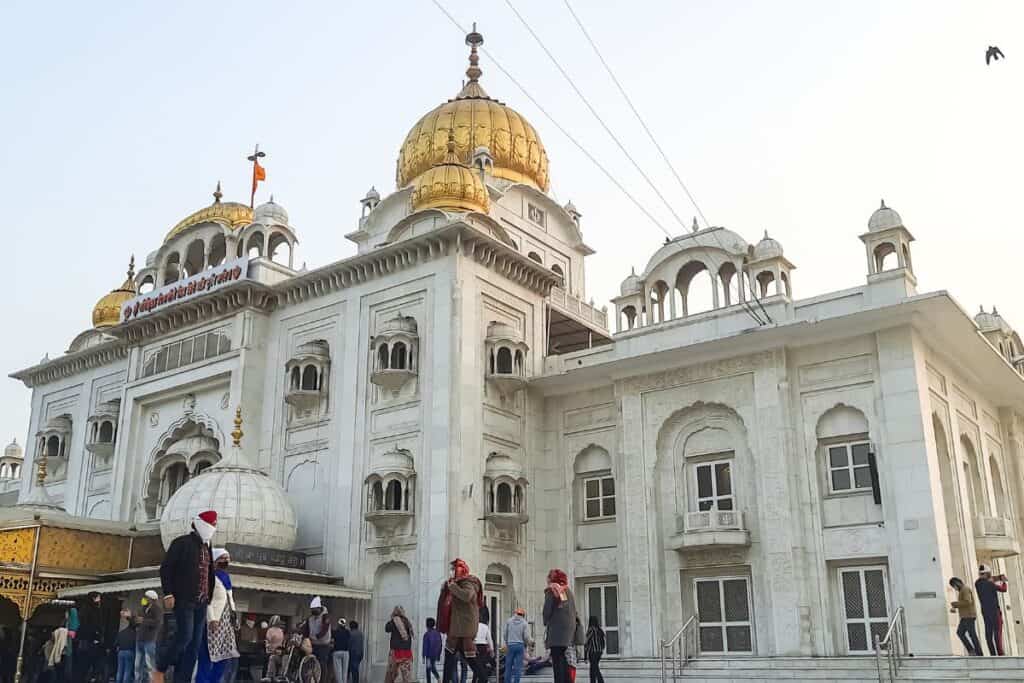
There are several South and Central Delhi tours to choose from. Although the tour is free, you should tip your leader if you’re happy with the tour.
- Free Walking Tour Delhi: https://www.freewalkingtourdelhi.com
Is Delhi Cheap to Visit?
Yes, it is! Delhi is the capital of India and while it has plenty of luxury hotels and restaurants, it is very easy to explore Delhi on a budget. Delhi has some great budget accommodation, and there are plenty of inexpensive places to eat well. It’s also cheap and easy to get around with Delhi’s excellent metro system. And as you see from this list, there are many free places to visit in Delhi.
Where Can I Eat Cheap in Delhi?
Delhi has many cheap, local restaurants with excellent food. Some of Delhi’s most delicious and budget friendly food is on the streets. Don’t be afraid to try it. Delhi is a melting pot of cultures and the street food scene is one of the best in the world. See my tips on how to eat street food safely.
If visiting a gurudwara, you can also have langar, the free vegetarian meal. Everyone is welcome, regardless of religion, age, colour or sex. I often have langar when visiting a gurudwara. It’s a wonderful, community experience. Here’s how to have langar at Gurudwara Bangla Sahib (but all langars will be similar).
Are There Free Cultural Events and Performances in Delhi?
The answer is yes, but there isn’t really a one stop shop list of all free events. You can join a Delhi expat FB group (they are often full of helpful information), and check the websites of the cultural centres, which host free events in locations around Delhi from time to time:
- India International Centre: https://iicdelhi.in
- India Habitat Centre: https://www.indiahabitat.org
- Kamani Auditorium: https://www.kamaniauditorium.org
- National School of Drama: https://nsd.gov.in/delhi
The Wrap-Up on 78 Free Places to Visit in Delhi in 2025
As you can see it’s easy to explore Delhi on a budget. In fact, there are so many free places to visit in Delhi, you’ll have to come back multiple times to see them all!
Don’t forget travel insurance! It’s always a good idea to carry travel insurance just in case something goes wrong. I really like and use SafetyWing
